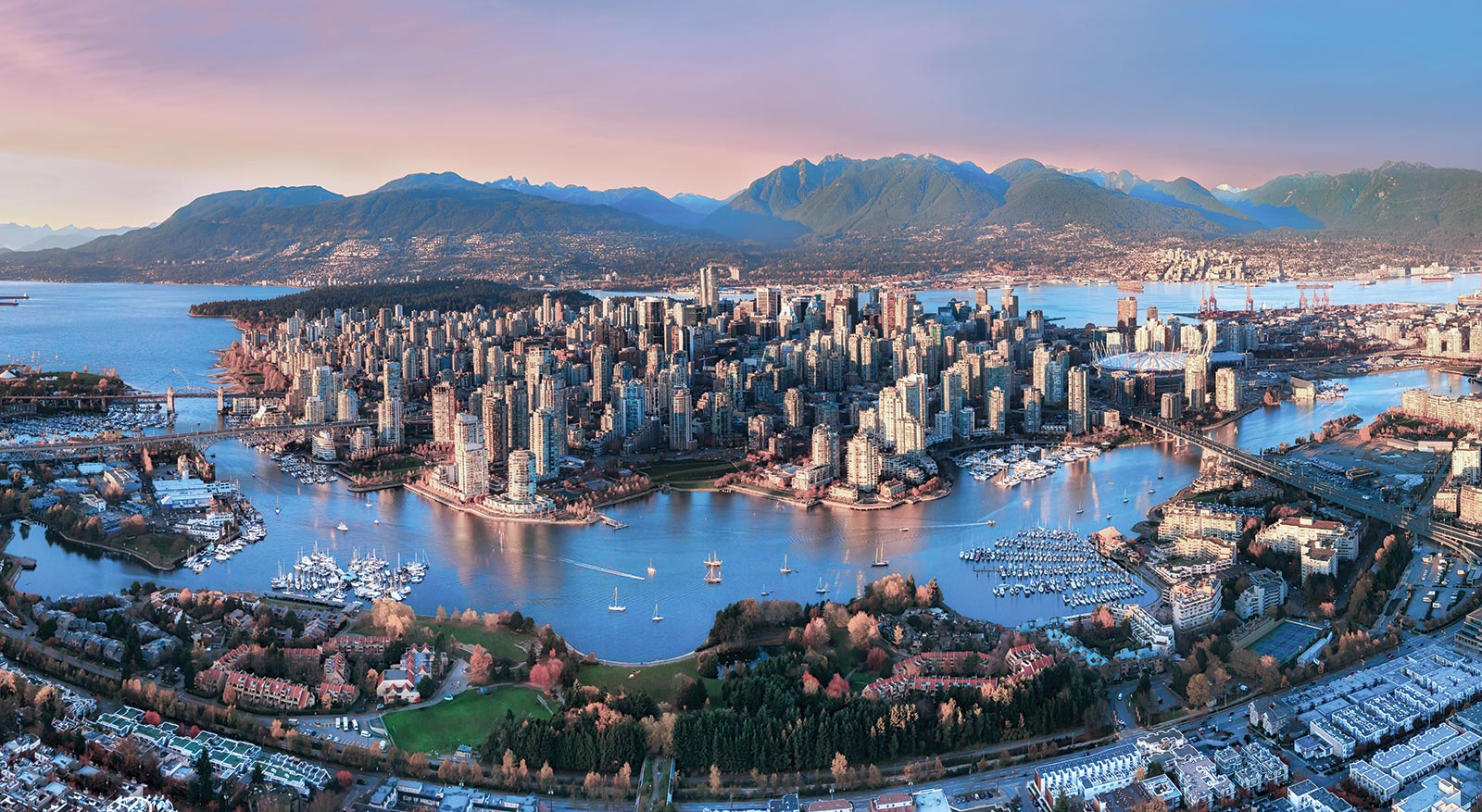
漢德百科全書 | 汉德百科全书
 FIFA Fussball-Weltmeisterschaft 2026
FIFA Fussball-Weltmeisterschaft 2026
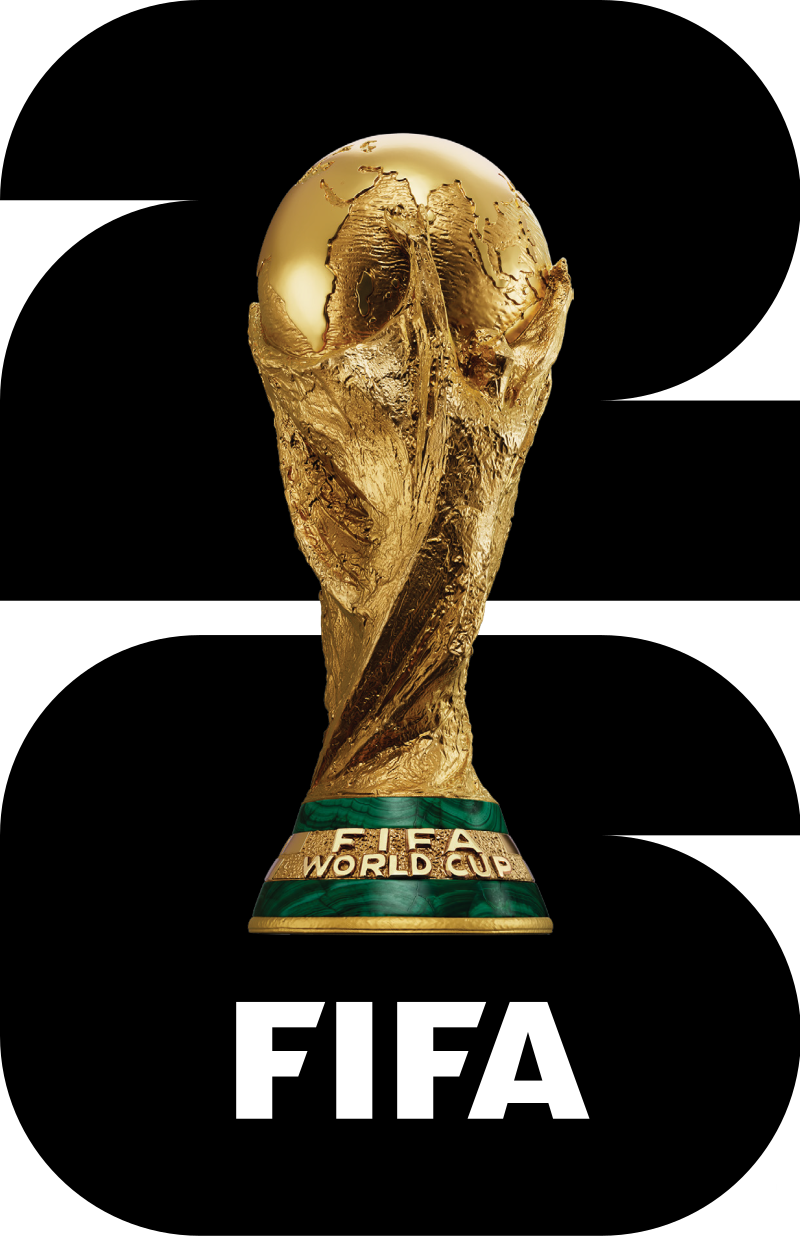

 FIFA Fussball-Weltmeisterschaft 2026
FIFA Fussball-Weltmeisterschaft 2026
 FIFA Club World Cup 2025
FIFA Club World Cup 2025

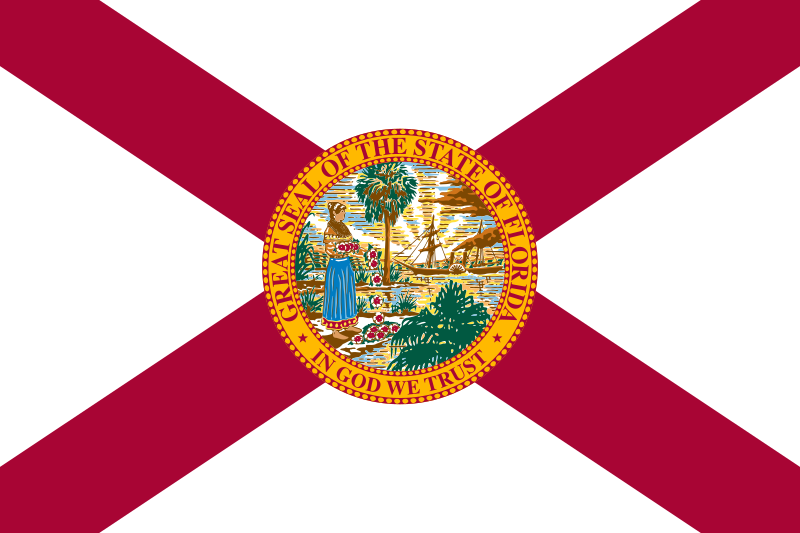 Florida-FL
Florida-FL

 History
History
 M 1500 - 2000 AD
M 1500 - 2000 AD

 History
History
 N 2000 - 2100 AD
N 2000 - 2100 AD

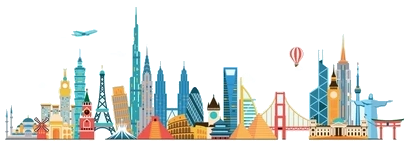 International cities
International cities
 ***Global Urban Economic Competitiveness
***Global Urban Economic Competitiveness
 United States
United States

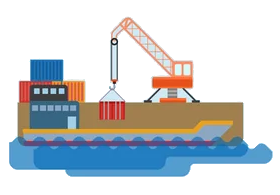 Important port
Important port
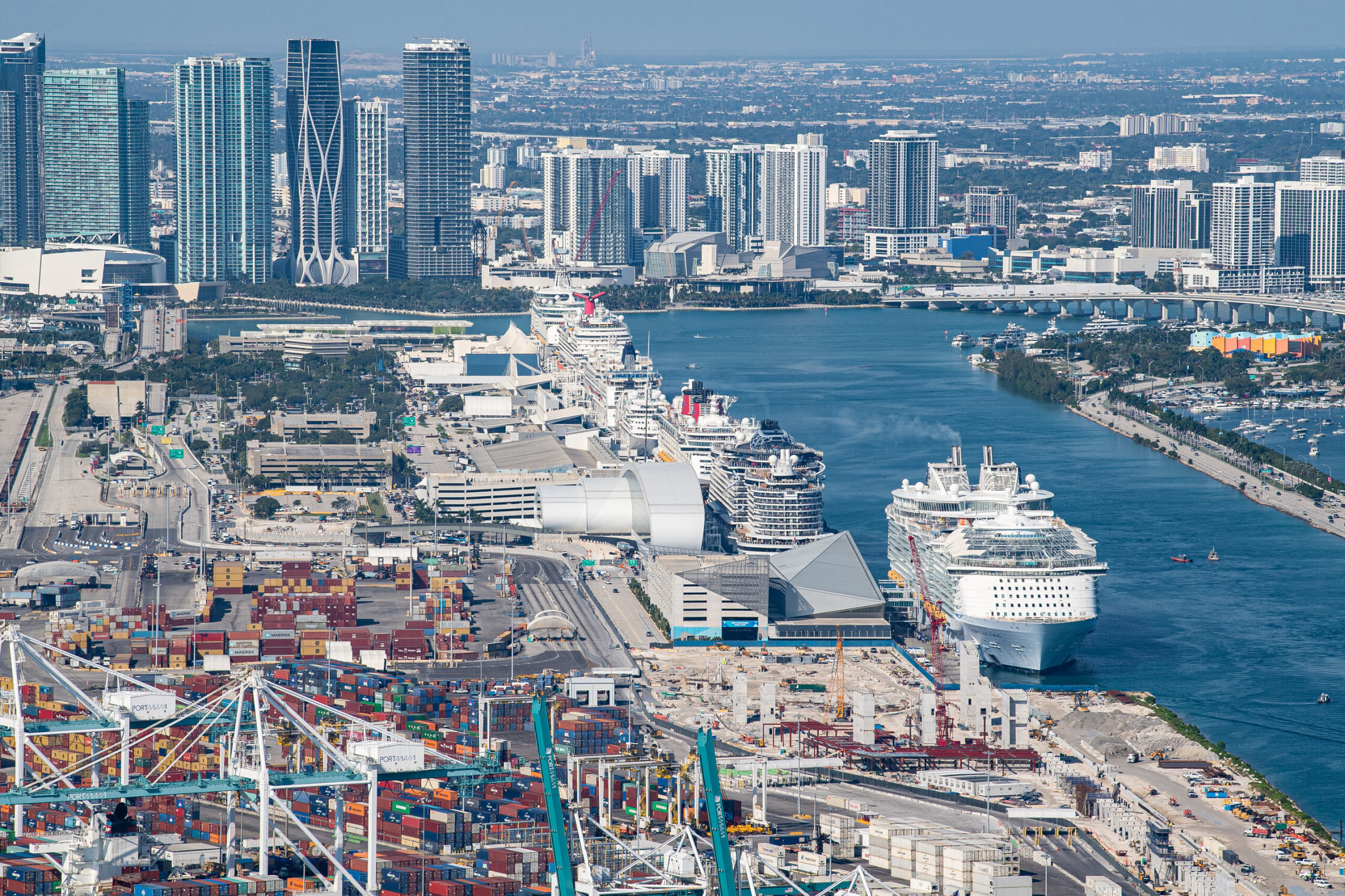


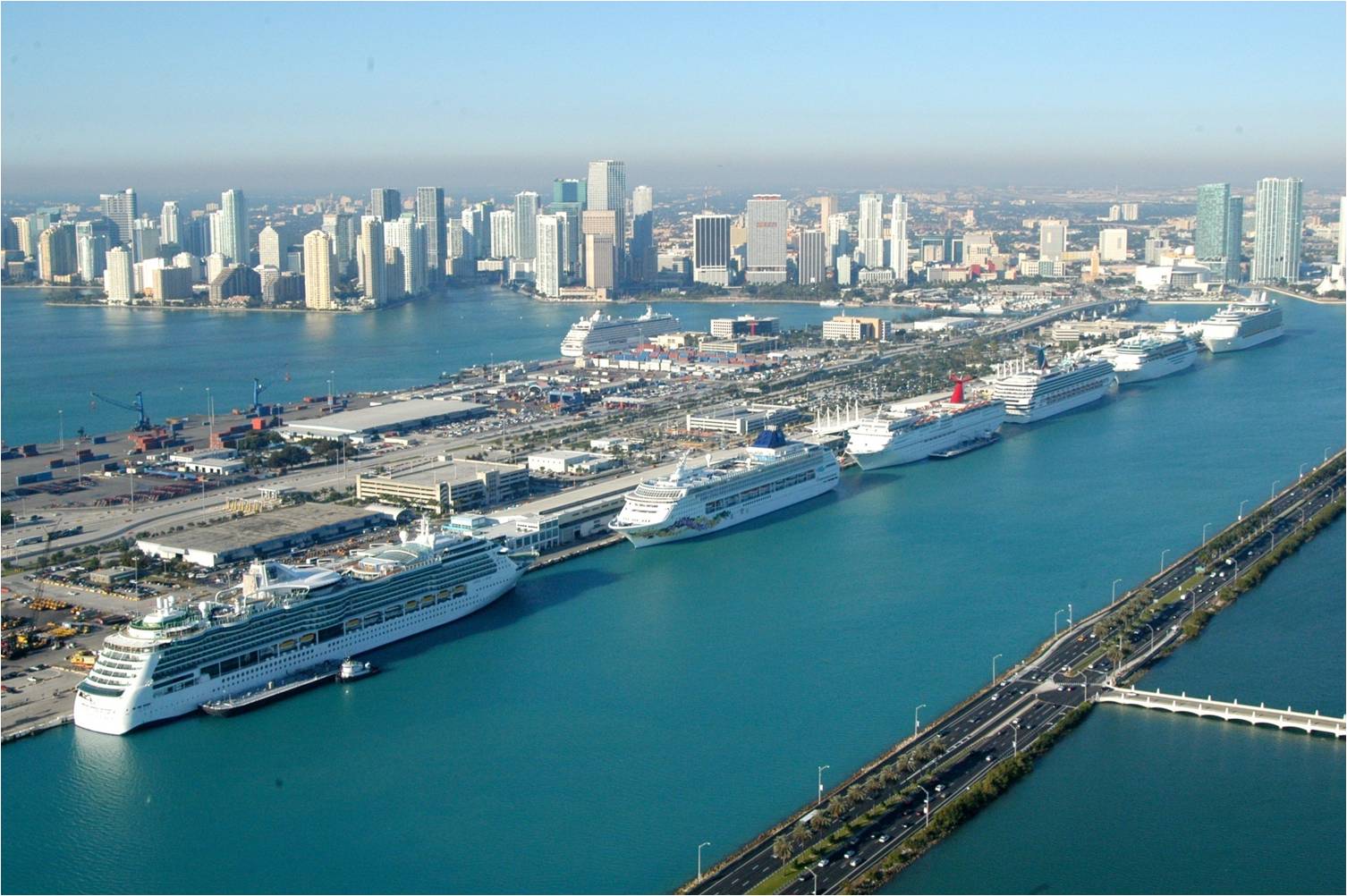
Miami [maɪˈæmɪ] (City of Miami) ist eine Stadt und der Verwaltungssitz des Miami-Dade County im US-Bundesstaat Florida mit 442.241 Einwohnern (Stand: 2020).[1] Das Stadtgebiet hat eine Größe von 143,1 km². Die Stadt ist Teil der Metropolregion Miami mit etwa 6,1 Millionen Einwohnern. Der Name „Miami“ kommt von dem indianischen Wort Mayaimi (großes Wasser), mit dem der Lake Mayaimi (heute Lake Okeechobee) und der dort lebende Indianerstamm Mayaimi bezeichnet wurde. Die Stadt liegt an der Mündung des Miami River in die Biscayne Bay, die ein Teil des Atlantischen Ozeans ist. Nach Jacksonville ist Miami die zweitgrößte Stadt Floridas. Die Mehrheit der Einwohner Miamis spricht Spanisch als Muttersprache.
迈阿密(英语:Miami),又译为迈亚美,位于美国佛罗里达州东南角比斯坎湾、佛罗里达大沼泽地和大西洋之间,是该州仅次于杰克逊维尔的第二大城市,也是迈阿密-戴德县最大的城市和县治所在。迈阿密还是迈阿密都会区中最大的城市,这个都市圈由迈阿密-戴德县、布劳沃德县和棕榈滩县组成,人口超过559万人,是美国东南部最大的都市圈,也是全美第四大都市圈[1]。
迈阿密是国际性的大都市,在金融、商业、媒体、娱乐、艺术和国际贸易等方面拥有重要的地位[2],是许多公司、银行和电视台的总部所在。迈阿密还被认为是文化的大熔炉,受庞大的拉丁美洲族群和加勒比海岛国居民的影响很大(当地居民多使用西班牙语和海地克里奥尔语),与北美洲、南美洲、中美洲以及加勒比海地区在文化和语言上关系密切,因此有时还被称为“美洲的首都”。
2008年,迈阿密因其良好的空气质量、大量的植物被覆盖、清洁的饮用水、干净的街道和全市范围的垃圾回收计划而被《福布斯》评为“美国最干净的城市”[3]。2009年,迈阿密还被瑞士联合银行评为美国最富裕城市和全球第五富裕城市[4]。
迈阿密拥有美国第三高的天际线,全市超过300栋摩天大楼。迈阿密市中心是国际银行在美国集中度最高的地方,不少全国性或国际性的公司亦在这里设有办公室[5][6]。迈阿密港在过去20年都被公认为“世界邮轮之都”[7][8]。

 FIFA Fussball-Weltmeisterschaft 2026
FIFA Fussball-Weltmeisterschaft 2026
 FIFA Club World Cup 2025
FIFA Club World Cup 2025

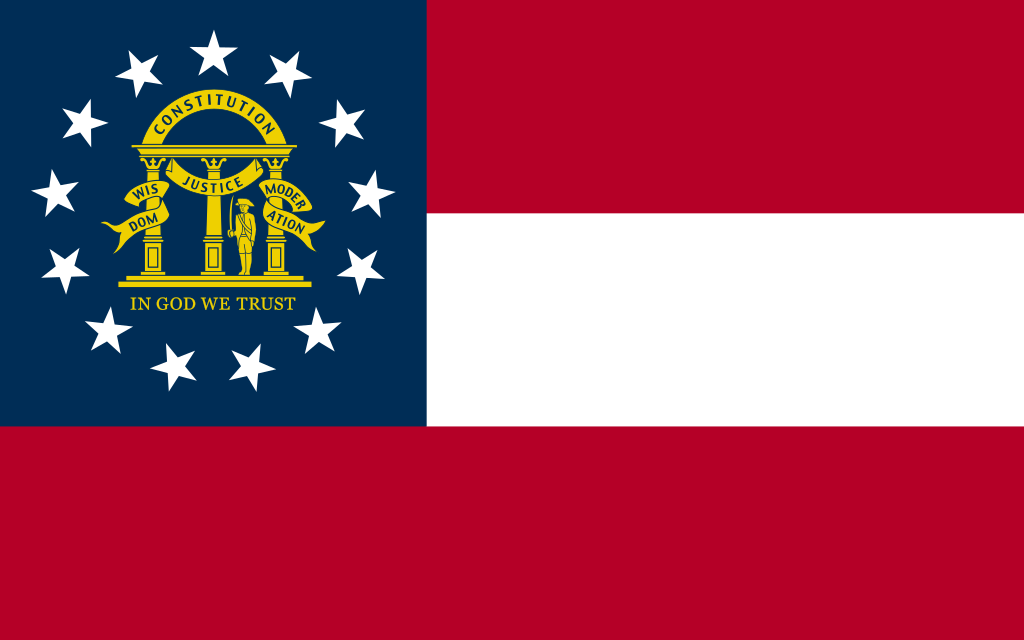 Georgia-GA
Georgia-GA
 National Football League 2018
National Football League 2018

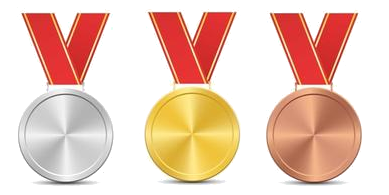 Sport
Sport

 FIFA Fussball-Weltmeisterschaft 2014
FIFA Fussball-Weltmeisterschaft 2014
 FIFA Fussball-Weltmeisterschaft 2022
FIFA Fussball-Weltmeisterschaft 2022
 FIFA Fussball-Weltmeisterschaft 2022
FIFA Fussball-Weltmeisterschaft 2022
 Group B
Group B

 FIFA Fussball-Weltmeisterschaft 2026
FIFA Fussball-Weltmeisterschaft 2026

 Sport
Sport
 (F)CONCACAF Gold Cup
(F)CONCACAF Gold Cup
 United States
United States
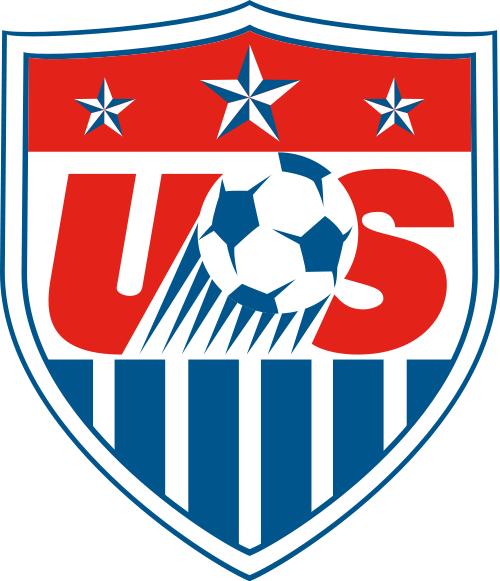









 FIFA Fussball-Weltmeisterschaft 2026
FIFA Fussball-Weltmeisterschaft 2026

 International cities
International cities
 *World Design Capital
*World Design Capital
 Mexico
Mexico
 Olympic Summer Games
Olympic Summer Games

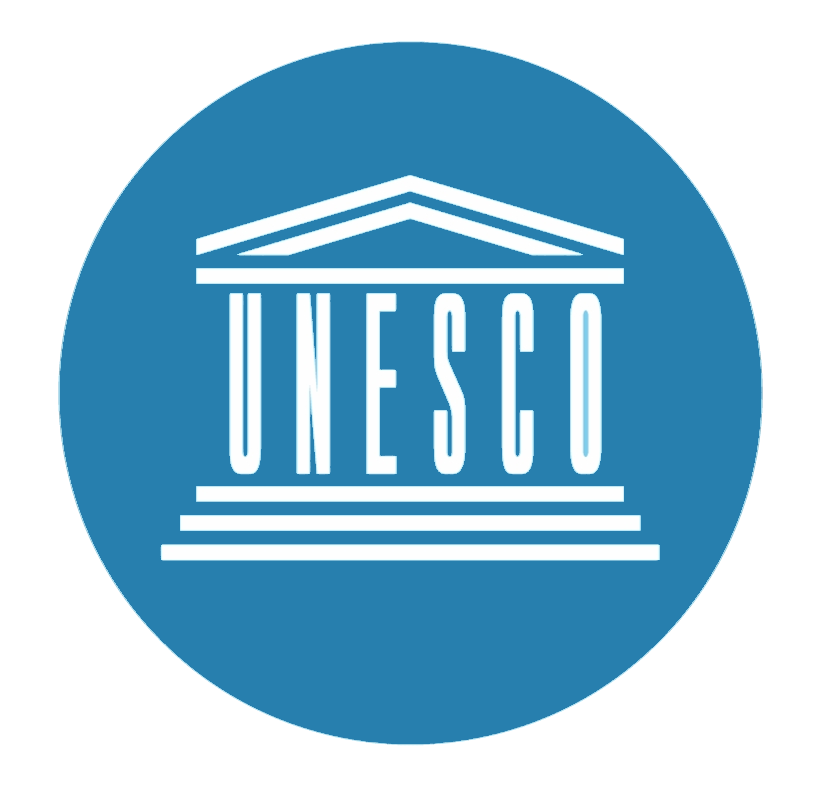 World Heritage
World Heritage
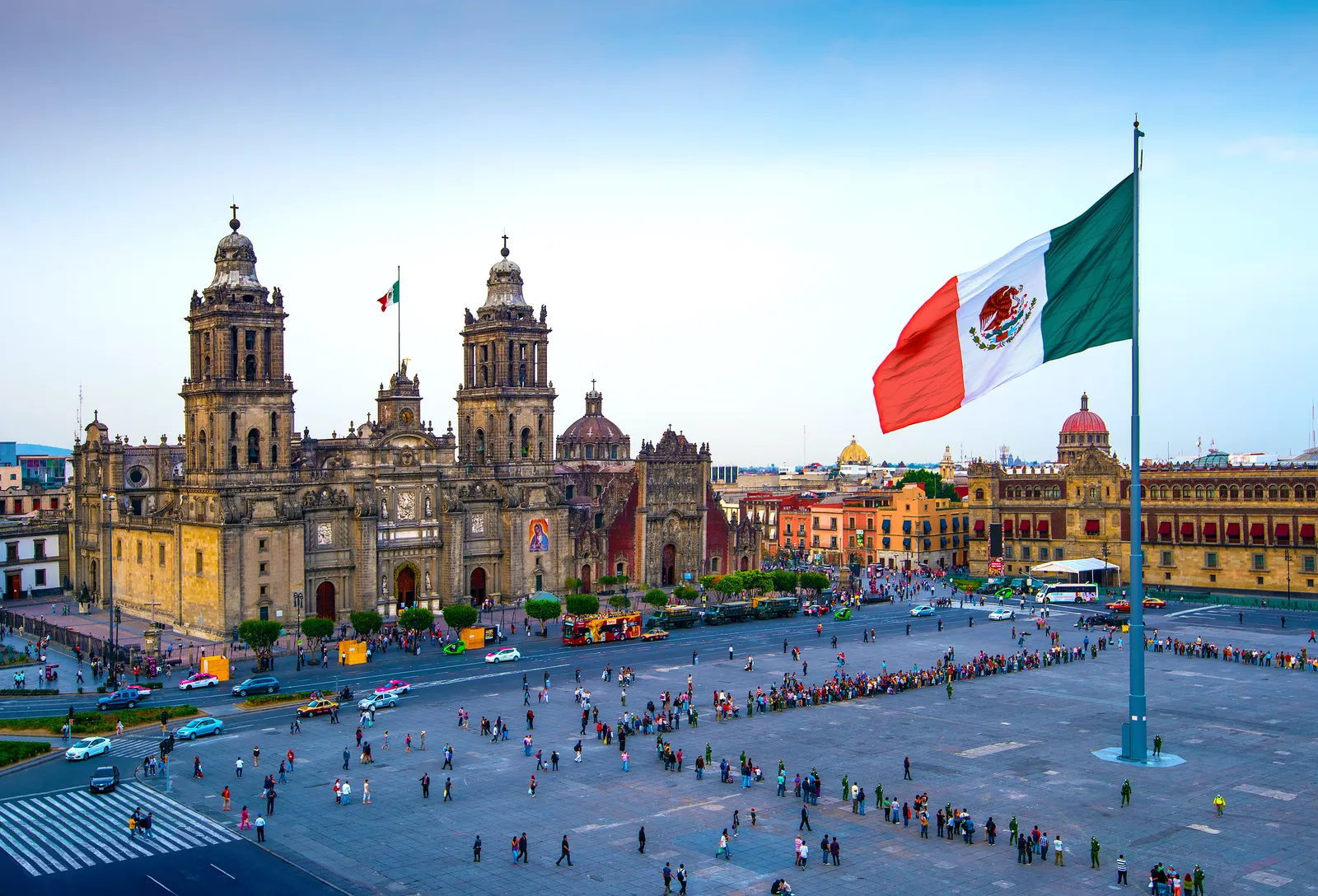

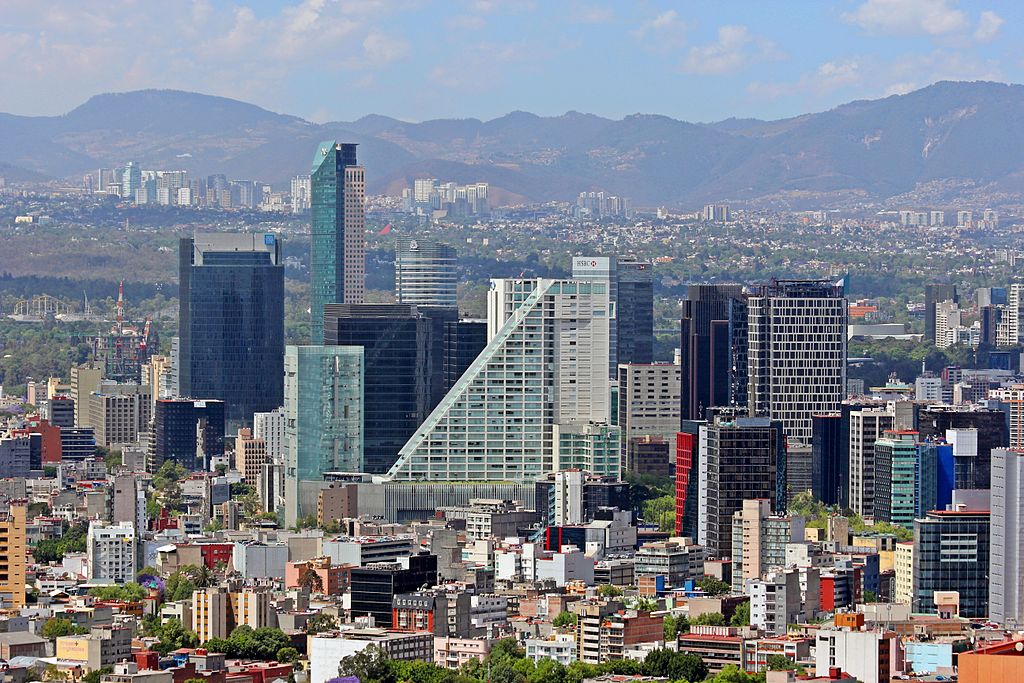
Mexiko-Stadt (spanisch Ciudad de México oder México D.F.) ist die Hauptstadt von Mexiko. Sie gehört zu keinem Bundesstaat, sondern bildet einen bundesunmittelbaren Hauptstadtbezirk (Distrito Federal), in dem 8,8 Millionen Menschen (2009) leben. Die Metropolregion Zona Metropolitana del Valle de México (ZMVM), zu der Mexiko-Stadt, der östliche Teil des Bundesstaates México und eine Gemeinde aus dem Staat Hidalgo gehören, ist mit 20 Millionen Einwohnern[1] eine der größten der Erde.
Die Stadt ist politischer, wirtschaftlicher, sozialer und kultureller Mittelpunkt sowie größter Verkehrsknotenpunkt des Landes. Sie ist Sitz des Erzbistums Mexiko sowie zahlreicher Universitäten, Hoch- und Fachschulen. Die UNESCO hat ihr historisches Zentrum mit den Überresten der Aztekenhauptstadt Tenochtitlan sowie die Wassergärten im Stadtteil Xochimilco 1987 und den zentralen Universitätscampus der Universidad Nacional Autónoma de México[2] im Jahr 2007 zum Weltkulturerbe erklärt.
墨西哥城(西班牙语:Ciudad de México 西班牙语发音:[sjuˈða(ð) ðe ˈmexiko] ( 聆听),缩写为CDMX)是墨西哥合众国首都暨政治、经济、文化中心,亦为世界上最大的都市之一。墨西哥城位于墨西哥中部的高原地区中央,其与周围的卫星城市原合称墨西哥联邦特区(México, D.F.),行政级别上与该国其他31个州(Estados)同等但在行政上直属中央[8]。2016年1月29日,墨西哥联邦特区改制为墨西哥市(Ciudad de México),改制后的墨西哥市拥有相当程度的自治权,包括自己的市自治法与和其他州级行政区类似的市议会机构[8]。原本联邦区下各区(delegaciones)也一并改制为市镇(municipio)并选出各自的市长。
聆听),缩写为CDMX)是墨西哥合众国首都暨政治、经济、文化中心,亦为世界上最大的都市之一。墨西哥城位于墨西哥中部的高原地区中央,其与周围的卫星城市原合称墨西哥联邦特区(México, D.F.),行政级别上与该国其他31个州(Estados)同等但在行政上直属中央[8]。2016年1月29日,墨西哥联邦特区改制为墨西哥市(Ciudad de México),改制后的墨西哥市拥有相当程度的自治权,包括自己的市自治法与和其他州级行政区类似的市议会机构[8]。原本联邦区下各区(delegaciones)也一并改制为市镇(municipio)并选出各自的市长。
メキシコシティ(西: Ciudad de México スペイン語発音: [sjuˈða(ð) ðe ˈmexiko] (![]() 音声ファイル)、英語: Mexico City)は、メキシコ合衆国の首都。同国を構成する32州のひとつ[注 1]。中米屈指の世界都市。
音声ファイル)、英語: Mexico City)は、メキシコ合衆国の首都。同国を構成する32州のひとつ[注 1]。中米屈指の世界都市。
なお、国名と同一名称のため「市」に相当する単語を付けて呼ばれるのが通例となっており、メキシコの公用語であるスペイン語では「シウダー・デ・メヒコ」(Ciudad de México) と発音される[1]。日本では、主に用いられる英語名の他にメキシコ市と呼ばれる場合もある[2]。
メキシコ最大の都市であり、2016年の近郊を含む都市圏人口は2,023万人であり、世界第12位である[3]。メキシコのみならずラテンアメリカの経済の中心地の一つであり、2014年の都市圏GDPは3,837億ドルである[4]。これはラテンアメリカではサンパウロに次ぐ第2位であり、世界では第18位に位置する。
日本の民間研究所が2016年に発表した「世界の都市総合力ランキング」では、世界37位と評価されており、ラテンアメリカでは首位である[5]。また、アメリカのシンクタンクが2016年に発表した世界都市ランキングにおいて、世界39位と評価されており、ラテンアメリカではブエノスアイレス、サンパウロに次ぐ3位である[6]。
かつて行政上の正式名称は連邦区(Distrito Federal、D.F.)だったが、2016年にメキシコシティ(Ciudad de México)に変更され、独立した州となった[7][8]。
Mexico City (Spanish: Ciudad de México, locally [sjuˈða(ð) ðe ˈmexiko] ( listen);[13] abbreviated as CDMX; Nahuatl languages: Āltepētl Mēxihco) is the capital and largest city of Mexico and the most-populous city in North America.[14][15] Mexico City is one of the most important cultural and financial centres in the world.[16] It is located in the Valley of Mexico (Valle de México), a large valley in the high plateaus in the center of Mexico, at an altitude of 2,240 meters (7,350 ft). The city has 16 subdivisions, formerly known as boroughs.
listen);[13] abbreviated as CDMX; Nahuatl languages: Āltepētl Mēxihco) is the capital and largest city of Mexico and the most-populous city in North America.[14][15] Mexico City is one of the most important cultural and financial centres in the world.[16] It is located in the Valley of Mexico (Valle de México), a large valley in the high plateaus in the center of Mexico, at an altitude of 2,240 meters (7,350 ft). The city has 16 subdivisions, formerly known as boroughs.
The 2009 population for the city proper was approximately 8.84 million people,[17] with a land area of 1,485 square kilometers (573 sq mi).[18] According to the most recent definition agreed upon by the federal and state governments, the population of Greater Mexico City is 21.3 million, which makes it the second largest metropolitan area of the Western Hemisphere (behind São Paulo, Brazil), the eleventh-largest agglomeration (2017), and the largest Spanish-speaking city in the world.[19]
Greater Mexico City has a GDP of $411 billion in 2011, making Greater Mexico City one of the most productive urban areas in the world.[20] The city was responsible for generating 15.8% of Mexico's GDP, and the metropolitan area accounted for about 22% of total national GDP.[21] If it were an independent country, in 2013, Mexico City would be the fifth-largest economy in Latin America, five times as large as Costa Rica and about the same size as Peru.[22]
Mexico's capital is both the oldest capital city in the Americas and one of two founded by indigenous people, the other being Quito, Ecuador. The city was originally built on an island of Lake Texcoco by the Aztecs in 1325 as Tenochtitlan, which was almost completely destroyed in the 1521 siege of Tenochtitlan and subsequently redesigned and rebuilt in accordance with the Spanish urban standards. In 1524, the municipality of Mexico City was established, known as México Tenochtitlán,[23] and as of 1585, it was officially known as Ciudad de México (Mexico City).[23] Mexico City was the political, administrative, and financial center of a major part of the Spanish colonial empire.[24] After independence from Spain was achieved, the federal district was created in 1824.
After years of demanding greater political autonomy, residents were finally given the right to elect both a head of government and the representatives of the unicameral Legislative Assembly by election in 1997. Ever since, left-wing parties (first the Party of the Democratic Revolution and later the National Regeneration Movement) have controlled both of them.[25] The city has several progressive policies, such as abortion on demand, a limited form of euthanasia, no-fault divorce, and same-sex marriage.
On 29 January 2016, it ceased to be the Federal District (Spanish: Distrito Federal or D.F.) and is now officially known as Ciudad de México (or CDMX), with a greater degree of autonomy.[26][27] A clause in the Constitution of Mexico, however, prevents it from becoming a state within the Mexican federation, as it is the seat of power in the country, unless the capital of the country were to be relocated elsewhere.[28]
Mexico (nom complet : Ville de Mexico, en espagnol : Ciudad de México /sjuˈða(ð) ðe ˈmexiko/ Écouter, en abrégé CDMX) est une entité fédérative1 et la capitale du Mexique2.
Cette entité fédérative n'est ni une ville ni un État au sens des articles 43, 44 et 122 de la Constitution mexicaine3.
Mexico est un centre financier et culturel important avec une économie agricole très présente dans les périphéries4.
Fondée au début du XIVe siècle par les Mexicas (Aztèques) sur un îlot du lac Texcoco, la ville précolombienne de Tenochtitlan a été remplacée par les conquérants espagnols lors de la chute de l'Empire aztèque en 1521 par la première grande ville de tracé européen du continent. Dès 1522, Hernán Cortés prend la décision de construire au même endroit la capitale de la Nouvelle-Espagne, qu'il nomme « México ».
Appelée « District Fédéral » (Distrito Federal) avant la réforme de janvier 2016 (es)5, Mexico possède un statut constitutionnel particulier car elle est le siège des pouvoirs de la Nation, et constitue, sans avoir le statut d'État, la 32e entité fédérative du Mexique.
Mexico est divisé en seize arrondissements qui sont dès fin 2017 dirigées par un maire élu au suffrage universel et ont un statut comparable a celui d'une municipalité.
Cette entité fédérative, qui couvre 0,08 % du territoire national6 se trouve au centre du pays, sur un plateau situé à une altitude de 2 400 mètres, entouré de sommets volcaniques culminant à plus de 5 000 mètres au-dessus du niveau de la mer7, 307 km2 de son territoire se situent en zone agricole8.
La zone métropolitaine de la vallée de Mexico (ZMVM) est une aire urbaine définie, mais non une démarcation politique, peuplée de 18 050 000 habitants, la majorité d'entre eux vivant dans l'État de Mexico et dans l'entité fédérative de Mexico9. C'est l'aire urbaine la plus peuplée parmi celles de langue espagnole, une des 3 plus peuplées du continent américain (avec New York et São Paulo) et une des 5 à 15 plus peuplées du monde10. Elle comprend 76 entités administratives distinctes dont les 16 délégations, 59 municipalités de l'État de Mexico et une de l'État d'Hidalgo.
En 2018, Mexico a rejoint le mouvement Fab City, suivant l'appel lancé par le maire de Barcelone, Xavier Trias, à ce que toutes les villes du monde deviennent autosuffisantes pour 205411.
Città del Messico (in spagnolo Ciudad de México; in nahuatl Āltepētl Mēxihco) è la capitale del Messico e uno dei suoi 32 stati federati; in lingua originale era chiamata ufficialmente, fino al 31 gennaio 2016, México Distrito Federal[1][2][3] e in italiano è talora chiamata Città di Messico[4]. Centro politico, economico e culturale, raccoglie un decimo della popolazione nazionale e occupa una decima parte della Valle del Messico nel centro-sud del Paese, su un'area che era parte della conca lacustre del lago di Texcoco.
Si tratta del più grande centro del Paese, nonché una delle città più popolose del mondo e, in assoluto, la più popolosa città ispanofona con 8 851 080 abitanti nel 2010[5]. Con il passare dei secoli la città ha inglobato numerosi villaggi e cittadine che si trovavano nelle vicinanze, tanto che all'inizio del XXI secolo l'area metropolitana usciva dai confini del Distretto Federale estendendosi su 40 comuni dello Stato del Messico e un comune dello Stato di Hidalgo. La zona metropolitana della città era abitata nel 2005 da circa 19 311 365 abitanti registrati, circa il 20% dell'intera popolazione del Messico. Nel 2007 fu stimata una popolazione di 9 755 980 abitanti per la città e 24 748 250 per l'area metropolitana[6]. Secondo il rapporto urbanistico delle Nazioni Unite, la zona metropolitana di Città del Messico è l'agglomerato urbano più grande dell'emisfero occidentale e il secondo più grande del mondo dopo Tokyo[7].
Dallo studio realizzato da PricewaterhouseCoopers Città del Messico occupa l'ottavo posto nella speciale classifica sulle città più ricche del mondo avendo un PIL di 331 miliardi di dollari che si raddoppieranno, secondo lo stesso studio, nel 2020, collocandola al settimo posto della graduatoria dietro solo a città come Tokyo, New York, Chicago, Los Angeles, Londra e Parigi[8]. La città conta, inoltre, più di 500 grattacieli. Con 8 punti è una città globale di classe beta. Le enormi dimensioni della città si caratterizzano per una latitudine di più di 50 km e una longitudine di 35 km.
Ciudad de México (coloquialmente, la Ciudad de México), abreviado como CDMX y anteriormente denominada Distrito Federal o D.F.,nota 1 es una de las 32 entidades federativas de México,272829 así como la capital de los Estados Unidos Mexicanos.3031 Se localiza en el Valle de México, a una altitud media de 2240 m s. n. m. Tiene una superficie de 1495 km², y se divide administrativamente en 16 demarcaciones. Su población es de 8.9 millones de habitantes, aproximadamente. Sin embargo, cuando se considera también la Zona Metropolitana del Valle de México,32 suma entonces una población total de más de 22 millones de habitantes, lo que la coloca en el noveno puesto de las aglomeraciones urbanas más grandes y más pobladas del mundo, y con ello la más grande del continente americano y del mundo hispanohablante.33
Es el núcleo urbano más grande de la República mexicana y también su principal centro político, económico, social, académico, financiero, empresarial, turístico, cultural, de comunicaciones, de entretenimiento y de moda. Ha sido el escenario de varios de los acontecimientos históricos y mediáticos más importantes de dicha nación. Ciudad de México tuvo un PIB, en 2017, de 568 445 millones de dólares,13 con un crecimiento medio en ese año de 3.2 % (por encima de la media nacional); dichas cifras representaron el 17 % del total del PIB nacional, siendo la principal economía de México, además de significar una aportación del 25 % al crecimiento económico del país ese año.34 Catalogada como ciudad global, es uno de los centros financieros y culturales más importantes del mundo, con una de las economías más dinámicas a nivel internacional, y es la número quince a nivel mundial, por el tamaño de su PIB.35363738
No hay consenso científico sobre la fecha de la fundación de la ciudad, pero pudo ocurrir a inicios del siglo XIV. Correlaciones hechas en el periodo de la Nueva España sugieren que la fundación fue llevada a cabo por los mexicas el 13 de marzo de 1325, en una isla del lago de Texcoco, con el nombre de Cuauhmixtitlan y renombrada México-Tenochtitlan por Acamapichtli en 1376 como homenaje al caudillo Ténoch. Ese núcleo urbano se convirtió, con el tiempo, en la capital del Imperio mexica. El 13 de agosto de 1521, los mexicas fueron derrotados con la toma de la ciudad, a manos de los españoles y sus aliados indígenas al mando del conquistador castellano Hernán Cortés, acontecimiento que marcó el inicio de la época virreinal.39
En 1535, se creó oficialmente el Virreinato de la Nueva España, y se estableció la nueva Ciudad de México encima de la antigua México-Tenochtitlan, reconocida por una cédula real, de 1545, como Muy Noble, Insigne, Muy Leal e Imperial Ciudad de México por Carlos I de España.40 En ese momento, fue declarada capital del virreinato, y funcionó a partir de entonces como centro político, financiero y administrativo de los territorios del Imperio español en Norteamérica, Centroamérica, Asia y Oceanía. El dominio español de esa época sobre la ciudad capital llegó a su fin cuando concluyó la guerra de independencia en 1821, con la entrada del Ejército Trigarante a la ciudad. El estatus de sede de gobierno fue ratificado en el Acta de Independencia del Imperio Mexicano, que la nombraba Capital del Imperio.4139
En 1823, con la proclamación de la Primera República Federal, terminó de manera oficial el Primer Imperio mexicano (1821-1823), y el 18 de noviembre de 1824, el Congreso decidió crear un Distrito Federal (es decir, una entidad distinta a los demás estados), para albergar los poderes Ejecutivo, Legislativo y Judicial en un territorio que no perteneciese a ningún estado en particular, a fin de evitar la hegemonía de un estado sobre los demás de la federación. Gracias a fray Servando Teresa de Mier y a algunas otras personas que apoyaron su causa, Ciudad de México fue elegida como el lugar donde se concentrasen los poderes de la unión.42
En 1929, se extinguieron las libertades municipales del Distrito Federal.4344 Las progresivas modificaciones al estatus de la ciudad comenzaron en 1988 con la conformación de un órgano legislativo de elección popular (Asamblea de Representantes del Distrito Federal), continuaron en 1997 con la elección de un poder ejecutivo propio (jefe de Gobierno del D.F.); Desde entonces, una mayoría de los habitantes de Ciudad de México han decidido elegir jefes de gobierno de centroizquierda/izquierda para la capital; y concluyeron en 2016 con la reforma política que redactó su propia constitución política (entró en vigor plenamente en 2018); este proceso político también concluyó otorgándole en la carta magna federal, los mismos derechos y facultades de cualquier estado, pero que, considerando su categoría de capital de la república, conserva la denominación de entidad federativa; también se dejan de emplear los nombres México D.F. y Distrito Federal, para usar únicamente el término Ciudad de México.454639
En Ciudad de México, se encuentran enclavados cuatro de los 35 sitios Patrimonio de la Humanidad con los que cuenta el país: el Centro Histórico, Xochimilco, el Campus Central de la Ciudad Universitaria de la Universidad Nacional Autónoma de México y la Casa y estudio de Luis Barragán. En 1968, fue la primera ciudad de Latinoamérica y del mundo de habla hispana sede de unos Juegos Olímpicos.
La ciudad cuenta con la segunda mayor cantidad de museos (151) en el mundo, solo por debajo de Londres.47
Ме́хико (исп. Ciudad de México, аст. Āltepētl Mēxihco) — город, столица Мексики. Образует федеральный округ, разделённый на 16 районов. С 1325 по 1521 годы город имел название Теночтитлан. В 1521 году был разрушен и отстроен заново испанским завоевателем Эрнаном Кортесом. С 1821 года — столица независимой Мексики.
Население — 9 миллионов человек, крупнейший испаноязычный город мира. В пределах агломерации проживают 22 млн человек (оценка 2015 года, четвёртая по величине агломерация в мире[5]). Расположен в межгорной котловине на Мексиканском нагорье, на высоте 2240 метров над уровнем моря. Климат субтропический.
Главный политический, экономический и культурный центр Мексики. Относится к глобальным городам «альфа», ведущим финансовым центрам Северной Америки[6].
 César Luis Menotti
César Luis Menotti
 FIFA Fussball-Weltmeisterschaft 2014
FIFA Fussball-Weltmeisterschaft 2014
 FIFA Fussball-Weltmeisterschaft 2018
FIFA Fussball-Weltmeisterschaft 2018
 Group F
Group F
 FIFA Fussball-Weltmeisterschaft 2022
FIFA Fussball-Weltmeisterschaft 2022
 FIFA Fussball-Weltmeisterschaft 2022
FIFA Fussball-Weltmeisterschaft 2022
 Group C
Group C

 FIFA Fussball-Weltmeisterschaft 2026
FIFA Fussball-Weltmeisterschaft 2026
 FIFA-Konföderationen-Pokal 2013
FIFA-Konföderationen-Pokal 2013
 FIFA-Konföderationen-Pokal 2017
FIFA-Konföderationen-Pokal 2017
 Mexico
Mexico

 Sport
Sport
 (F)FIFA Confederations Cup
(F)FIFA Confederations Cup

 Sport
Sport
 (F)CONCACAF Gold Cup
(F)CONCACAF Gold Cup

 Sport
Sport
 (F)Soccer at the Olympic Games
(F)Soccer at the Olympic Games
 Sven-Göran Eriksson
Sven-Göran Eriksson
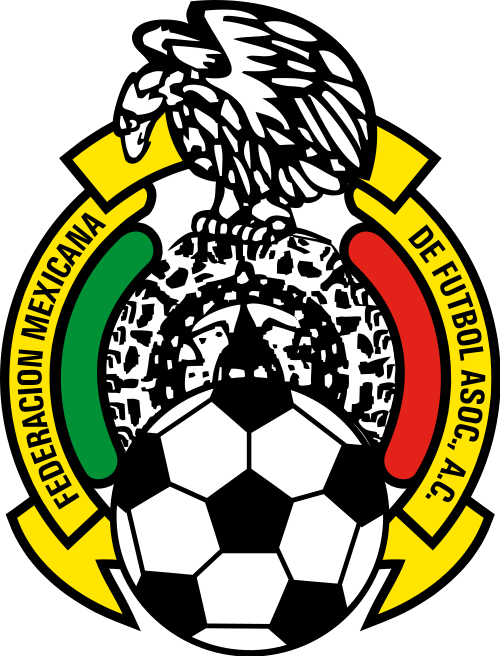












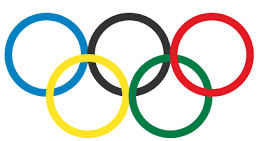

 FIFA Fussball-Weltmeisterschaft 2026
FIFA Fussball-Weltmeisterschaft 2026

 Financial
Financial
 ***Global Financial Center
***Global Financial Center

 History
History
 N 2000 - 2100 AD
N 2000 - 2100 AD

 History
History
 M 1500 - 2000 AD
M 1500 - 2000 AD

 International cities
International cities
 ***Global Urban Economic Competitiveness
***Global Urban Economic Competitiveness

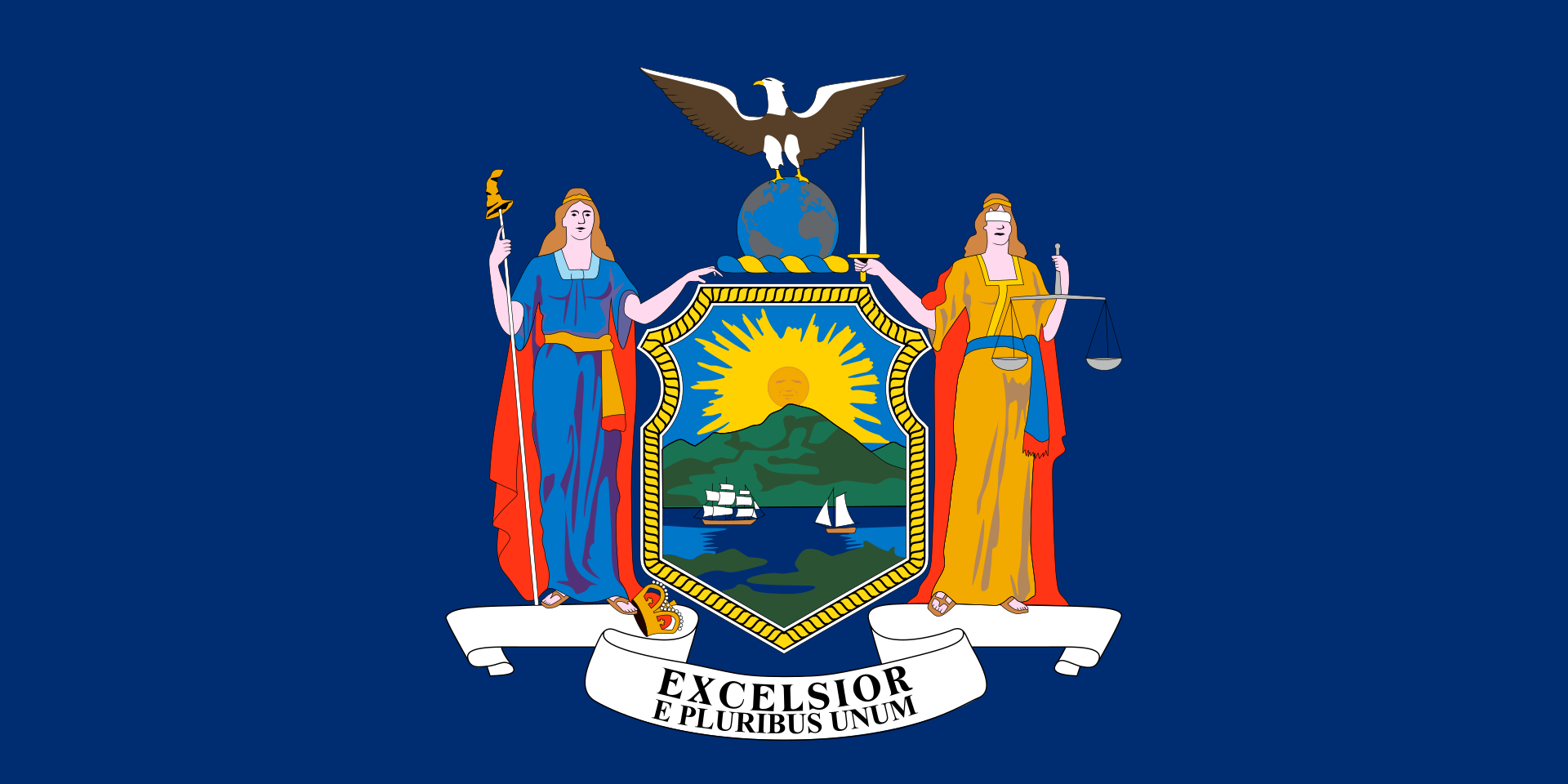 New York-NY
New York-NY
 Silk road
Silk road
 United States
United States

 Important port
Important port

New York City (AE: [nuːˈjɔɹk ˈsɪɾi], kurz: New York, deutsch veraltet: Neuyork,[1] Abk.: NYC) ist eine Weltstadt an der Ostküste der Vereinigten Staaten. Sie liegt im Bundesstaat New York und ist mit rund 8,5 Millionen Einwohnern die bevölkerungsreichste Stadt der Vereinigten Staaten.[2]
Die Metropolregion New York mit 18,9 Mio. Einwohnern[3] ist einer der bedeutendsten Wirtschaftsräume und Handelsplätze der Welt, Sitz vieler internationaler Konzerne und Organisationen wie der Vereinten Nationen sowie wichtiger See- und Binnenhafen an der amerikanischen Ostküste und dem Hudson. Die Stadt genießt mit ihrer großen Anzahl an Sehenswürdigkeiten, den 500 Galerien, etwa 200 Museen, mehr als 150 Theatern und mehr als 18.000 Restaurants Weltruf auch in den Bereichen Kunst und Kultur und verzeichnet jedes Jahr etwa 50 Mio. Besucher, davon knapp 12 Mio. aus dem Ausland.[4][5] Laut Forbes Magazine ist New York City die Stadt mit den höchsten Lebenshaltungskosten in den Vereinigten Staaten sowie eine der teuersten Städte weltweit.[6]
Nachdem 1524 Giovanni da Verrazano und 1609 Henry Hudson die Gegend des heutigen New Yorks erforscht hatten, siedelten ab 1610 niederländische Kaufleute an der Südspitze der Insel Manna-Hatta und bald darauf an der Westspitze von Long Island, dem heutigen Brooklyn. Erst 1626 kaufte Peter Minuit den Einheimischen, wahrscheinlich Lenni-Lenape-Indianern, die Insel „Manna-hatta“ für Waren im Wert von 60 Gulden ab. Die damit begründete Siedlung erhielt danach den Namen Nieuw Amsterdam und war zunächst Hauptstadt der Kolonie Nieuw Nederland, bis sie 1664 von den Briten erobert wurde und die Stadt den seither gültigen Namen bekam.[7] Ihr Aufstieg zur Weltstadt begann 1825 mit der Fertigstellung des Eriekanals.
Die Metropolregion New York erbrachte 2016 eine Wirtschaftsleistung von 1,657 Billionen US-Dollar. Unter den Städten der Welt belegt es damit den zweiten Rang hinter Tokio und wäre als eigener Staat gezählt unter den 20 größten Volkswirtschaften der Welt.[8]
美国纽约(NewYork)是美国乃至美洲最大的城市,全市由由五个区组成:曼哈顿(Manhattan)、布 鲁克林(Brooklyn)、皇 后区(Queens)、布郎克斯(Bronxs)和斯塔滕岛(Staten Island)。光是一个曼哈顿(Manhattan)就超过旧金山的大小,曼哈顿区是纽约市的精华所在,分成上中下城的曼哈顿区,拥有最流行最金融和最 颓废的风情。美国最大的500家公司中,有三分之一以上把总部设在曼哈顿。这里还能领略到著名的自由女神像、联合国总部、时代广场、大都会艺术博物馆、中央公园、苏活(soho)商业区、小意大利、第五大道商业区、格林威治村、华尔街、洛克菲勒中心、百老汇剧院区、唐人街等等人们印象中的纽约。
纽约是美国文化、艺术、音乐和出版中心,有众多的博物馆、美术馆、图书馆、科学研究机构和艺术中心,美国三大广播电视网和一些有影响的报刊、通讯社的总部都设在这里。(Quelle:http://www.ghl.com.cn)
纽约市(英语:New York City,简写为NYC),通称纽约,是位于美国纽约州的城市,为美国人口最多的城市、纽约都会区的核心、以及世界最大的城市之一,是对全球的经济、商业、金融、媒体、政治、教育和娱乐具有极大影响力的国际大都会。纽约还是联合国总部所在地[5],因此也被认为是世界外交的中心[6]。纽约还被称为“世界文化之都”[7][8],名列世界三大国际都会“纽伦港”之一。[9]
纽约位于东北部,濒临大西洋海岸,坐拥世界上最大的天然港口之一的纽约港[10]。纽约市共有曼哈顿区、皇后区、布鲁克林区、布朗克斯区、斯塔滕岛区等5个行政区,每一个行政区也各自是纽约州的一个县[11]。1898年,五个行政区被合并为现在的纽约市[12]。纽约也是全美国人口最密集的主要城市[13],2012年约有8,336,697人[14]居住于302.64平方英里(783.8平方千米)的土地上[15]。纽约都市区在全美的都会区中也高居第一,人口达到1980万[16],同时也是全美最大的联合统计区的一部分,在大区中人口达到2340万[17]。纽约也是语言和人口族群最为多元化的城市[18][19],在此使用的语言达到800种[20][21],而在2005年,全市有36%的人口是非美国出生的。
纽约的历史可以追溯至1624年,荷兰殖民者在这时候在此地建立贸易站,名为新阿姆斯特丹[22]。1664年,纽约及其周边地区为英国所占[22][23][24]。美国建国后,纽约在1785年至1790年为首都[25],1790年,纽约取代费城成为美国第一大城市[26]。纽约市的标志自由女神像在19世纪末20世纪初迎接了数百万移民的到来[27],它同时也是美国及其民主制度的象征[28]。
每年来到纽约的游客达到近5500万[29],许多区域和地标为人们所熟知。纽约还被不同媒体选为世界上被拍照最多的城市[30][31][32]。时报广场位于百老汇剧院区枢纽[33],被称作“世界的十字路口”[34],是世界上行人来往最密集的步行地段之一[35][36]和世界娱乐产业的中心之一[37]。城中的许多桥梁、高楼[38]和公园世界闻名。纽约的金融区,以曼哈顿下城的华尔街为龙头,被称为世界的金融中心[39][40],世界上最大的证券交易所(按上市公司市值)纽约证券交易所也位于此地[41]。曼哈顿的房地产是世界上最为昂贵的之一[42],其唐人街是西半球最为密集的华人聚居地[43][44]。纽约地铁是世界上最为发达的城市交通系统之一,提供24小时不间断的服务[45]。纽约同时还是许多高等学府的所在地[46],其中包括哥伦比亚大学、纽约大学和洛克菲勒大学等排名位于世界前35的学校[47]。
ニューヨーク市(英: New York City)は、アメリカ合衆国ニューヨーク州にある都市。
1790年以来、同国最大の都市であり[4]、市域人口は800万人を超え、都市圏人口では定義にもよるが2000万人以上である[2][5]。2015年の市内総生産は6625億ドルであり[6]、全米最大、東京に続き世界2位である。
ロンドンと並ぶ世界トップクラスの世界都市[7]、金融センターであり[8]、国際連合の本部所在地でもあり、世界の政治、経済、文化、ファッション、エンターテインメントなどに多大な影響を及ぼしている。
The City of New York, often called New York City (NYC) or simply New York, is the most populous city in the United States.[9] With an estimated 2017 population of 8,622,698[7] distributed over a land area of about 302.6 square miles (784 km2),[10][11] New York City is also the most densely populated major city in the United States.[12] Located at the southern tip of the state of New York, the city is the center of the New York metropolitan area, the largest metropolitan area in the world by urban landmass[13] and one of the world's most populous megacities,[14][15] with an estimated 20,320,876 people in its 2017 metropolitan statistical area and 23,876,155 residents in its combined statistical area.[4][5] A global power city,[16] New York City has been described uniquely[17] as the cultural,[18][19][20][21] financial,[22][23] and media capital of the world,[24][25] and exerts a significant impact upon commerce,[23] entertainment, research, technology, education, politics, tourism, art, fashion, and sports. The city's fast pace[26][27] has inspired the term New York minute.[28] Home to the headquarters of the United Nations,[29] New York is an important center for international diplomacy.[30][31]
Situated on one of the world's largest natural harbors,[32][33] New York City consists of five boroughs, each of which is a separate county of the State of New York.[34] The five boroughs – Brooklyn, Queens, Manhattan, The Bronx, and Staten Island – were consolidated into a single city in 1898.[35] The city and its metropolitan area constitute the premier gateway for legal immigration to the United States.[36] As many as 800 languages are spoken in New York,[37][38][39] making it the most linguistically diverse city in the world.[38][40][41] New York City is home to more than 3.2 million residents born outside the United States,[42] the largest foreign-born population of any city in the world.[43] In 2017, the New York metropolitan area produced a gross metropolitan product (GMP) of US$1.73 trillion.[44] If greater New York City were a sovereign state, it would have the 12th highest GDP in the world.[45]
New York City traces its origins to a trading post founded by colonists from the Dutch Republic in 1624 on Lower Manhattan; the post was named New Amsterdam in 1626.[46] The city and its surroundings came under English control in 1664[46] and were renamed New York after King Charles II of England granted the lands to his brother, the Duke of York.[47] New York served as the capital of the United States from 1785 until 1790.[48] It has been the country's largest city since 1790.[49] The Statue of Liberty greeted millions of immigrants as they came to the Americas by ship in the late 19th and early 20th centuries[50] and is a world symbol of the United States and its ideals of liberty and peace.[51] In the 21st century, New York has emerged as a global node of creativity and entrepreneurship,[52] social tolerance,[53] and environmental sustainability,[54][55] and as a symbol of freedom and cultural diversity.[56]
Many districts and landmarks in New York City are well known, with the city having three of the world's ten most visited tourist attractions in 2013[57] and receiving a record 62.8 million tourists in 2017.[58] Several sources have ranked New York the most photographed city in the world.[59][60] Times Square, iconic as the world's "heart"[61] and its "Crossroads",[62] is the brightly illuminated hub of the Broadway Theater District,[63] one of the world's busiest pedestrian intersections,[64][65] and a major center of the world's entertainment industry.[66] The names of many of the city's landmarks, skyscrapers,[67] and parks are known around the world. Manhattan's real estate market is among the most expensive in the world.[68][69] New York is home to the largest ethnic Chinese population outside of Asia,[70][71] with multiple signature Chinatowns developing across the city.[72][73][74] Providing continuous 24/7 service,[75] the New York City Subway is the largest single-operator rapid transit system worldwide, with 472 rail stations.[76][77][78] Over 120 colleges and universities are located in New York City, including Columbia University, New York University, and Rockefeller University, which have been ranked among the top universities in the world.[79][80] Anchored by Wall Street in the Financial District of Lower Manhattan, it has been called both the most economically powerful city and the leading financial center of the world,[23][81][82][83] and the city is home to the world's two largest stock exchanges by total market capitalization, the New York Stock Exchange and NASDAQ.[84][85]
New Yorka (prononciation en anglais américain /nuːˈjɔɹk/ ; Écouter), officiellement nommée City of New York, connue également sous les noms et abréviations de New York City ou NYC, est la plus grande ville des États-Unis en termes d'habitants et l'une des plus importantes du continent américain. Elle se situe dans le Nord-Est des États-Unis, sur la côte atlantique, à l'extrémité sud-est de l'État de New York. La ville de New York se compose de cinq arrondissements appelés boroughs : Manhattan, Brooklyn, Queens, le Bronx et Staten Island. Ses habitants s'appellent les New-Yorkais (en anglais : New Yorkers).
New York exerce un impact significatif sur le commerce mondial, la finance, les médias, l'art, la mode, la recherche, la technologie, l'éducation et le divertissement. Regroupant l'ensemble des caractéristiques d'une ville mondiale, elle est parfois considérée comme « la capitale du monde ». Si elle n'est plus la capitale fédérale des États-Unis depuis plus de deux siècles (elle occupe cette fonction de 1785 à 17902), New York alimente pendant quelques décennies une rivalité financière et politique avec Philadelphie.
Il n'en reste pas moins que New York est la ville la plus peuplée du pays depuis 1790, avec 8 550 405 habitants selon le Bureau du recensement des États-Unis (estimations de 20153,4). Elle est aussi la troisième plus grande ville du continent américain derrière Mexico et São Paulo. Située au cœur de la mégalopole du BosWashb, l'agglomération new-yorkaise (20 182 305 habitants5) s'étend sur plusieurs comtés de l'État de New York (banlieues est et nord) et empiète sur deux États limitrophes. En effet, l'État du New Jersey comprend ses banlieues ouest et sud, et celui du Connecticut comprend ses banlieues nord-est. Son aire urbaine quant à elle comptait 24 millions d'habitants en 20156.
New York accueille quelque 50 millions de visiteurs annuellement7,8,9. Times Square, « The Crossroads of the World »10,11,12, est l'une des intersections les plus populaires du monde13, et le quartier des théâtres de Broadway14 est la plaque tournante du spectacle dans le pays tout entier et un centre majeur de l'industrie du divertissement dans le monde15. La ville abrite un grand nombre de ponts et tunnels (78916 en 2012), gratte-ciel et parcs de renommée mondiale17.
New York se place en tête dans la triade des grands centres financiers mondiaux avec Londres et Hong Kong, ces trois villes étant appelées par les médias anglophones « Nylonkong »18. Le quartier financier de New York, ancré par Wall Street dans le Lower Manhattan, fonctionne ainsi comme la « capitale financière du monde »19,20,21,22,23,24 et est le foyer du New York Stock Exchange (Bourse de New York)25, tandis que le nouveau One World Trade Center est le plus haut gratte-ciel d'Amérique du Nord. De plus, le marché immobilier de Manhattan est parmi les plus chers dans le monde26.
New York est frappée le 11 septembre 2001 par le plus grave attentat ayant jamais touché les États-Unis, deux avions de ligne détournés par des terroristes membres d'Al-Qaïda percutèrent les tours jumelles du World Trade Center et les détruisirent entièrement. En 2018, le quartier est toujours en reconstruction. New York est l'une des villes les plus cosmopolites du monde, par ses nombreux quartiers ethniques. Les plus connus sont Little Italy, ou encore Chinatown qui intègre la plus forte concentration de population chinoise des Amériques27,28,29,30. Enfin, New York accueille des institutions d'importance mondiale. On peut notamment citer le siège de l'ONU, mais aussi de nombreux sièges de multinationales31 et des centres culturels tels que le Metropolitan Museum of Art, le Brooklyn Museum, le Museum of Modern Art, le Lincoln Center. De nombreuses universités réputées sont situées à New York, notamment l'université de la ville de New York, l'université Columbia, l'université de New York, et l'université Rockefeller, qui sont classées dans le top 50 des universités dans le monde32.
New York (AFI: /njuˈjɔrk/[6], in inglese americano [nuː ˈjɔɹk], in italiano conosciuta anche come Nuova York) è una città degli Stati Uniti d'America. Viene detta New York City per distinguerla dall'omonimo Stato federato.
Conosciuta nel mondo anche come "grande mela" (Big Apple), un paragone le cui origini risalgono al libro The Wayfarer in New York scritto da Edward S. Martin nel 1909,[7][8] è situata nello Stato omonimo e sorge su un'area di circa 785 km² alla foce del fiume Hudson, sull'oceano Atlantico, mentre l'area metropolitana comprende anche località situate nei due adiacenti stati del New Jersey e del Connecticut.
È la città più popolosa degli Stati Uniti (tanto che la sua popolazione di 8,5 milioni di abitanti supera il doppio dei 4 milioni di Los Angeles, seconda città nazionale), nonché uno dei centri economici più importanti del mondo, riconosciuta come città globale. L'agglomerato urbano conta 18.223.567 abitanti,[9] quello metropolitano è di 23.019.036 abitanti, che la rendono, secondo le stime, dalla terza alla sesta area urbana più popolata del mondo, e tra le prime tre dell'emisfero boreale e del continente americano (in concorrenza con Città del Messico e San Paolo). New York è anche stimata come diciottesima città più popolata al mondo, tra le città africane di Kinshasa e Lagos, nonché la più popolosa città anglofona del mondo.
Situata sulla cosiddetta baia di New York (New York Bay), in parte sul continente e in parte su isole, è amministrativamente divisa in cinque distretti (borough): Manhattan, The Bronx, Queens, Brooklyn e Staten Island. Di essi, uno è nel continente (il Bronx, situato a nord di Manhattan), tre si trovano su isole: (Staten Island, di fronte al New Jersey; Queens e Brooklyn, rispettivamente nell'estremità nord-occidentale e sud-occidentale dell'isola di Long Island) e uno, Manhattan, sull'appendice inferiore della penisola su cui si trova anche il Bronx e che da esso è separato dall'Harlem River, fiume-canale che collega l'Hudson all'East River. I cinque distretti sono sedi di contea metropolitana: la contea di New York propriamente detta occupa il territorio di Manhattan, quella di Kings il territorio di Brooklyn e quella di Richmond il territorio di Staten Island; le altre due contee (Bronx e Queens) sono omonime dei distretti e si sovrappongono al loro territorio amministrativo. New York è inoltre riconosciuta come una delle città con i panorami urbani più impressionanti del mondo.
Non appartengono a New York, né fanno parte della sua area metropolitana, ma gravitano intorno ad essa per ragioni economiche e culturali, alcune città del confinante Stato del New Jersey, come Jersey City, Newark e Hoboken, situate sulla riva occidentale dell'Hudson, di fronte a Manhattan. La citata
 Alberto Zaccheroni
Alberto Zaccheroni
 FIFA Fussball-Weltmeisterschaft 2014
FIFA Fussball-Weltmeisterschaft 2014
 FIFA Fussball-Weltmeisterschaft 2018
FIFA Fussball-Weltmeisterschaft 2018
 Group H
Group H
 FIFA Fussball-Weltmeisterschaft 2022
FIFA Fussball-Weltmeisterschaft 2022
 FIFA Fussball-Weltmeisterschaft 2022
FIFA Fussball-Weltmeisterschaft 2022
 Group E
Group E

 FIFA Fussball-Weltmeisterschaft 2026
FIFA Fussball-Weltmeisterschaft 2026
 FIFA-Konföderationen-Pokal 2013
FIFA-Konföderationen-Pokal 2013
 Japan
Japan

 Sport
Sport
 (F)FIFA Confederations Cup
(F)FIFA Confederations Cup
 Zico
Zico
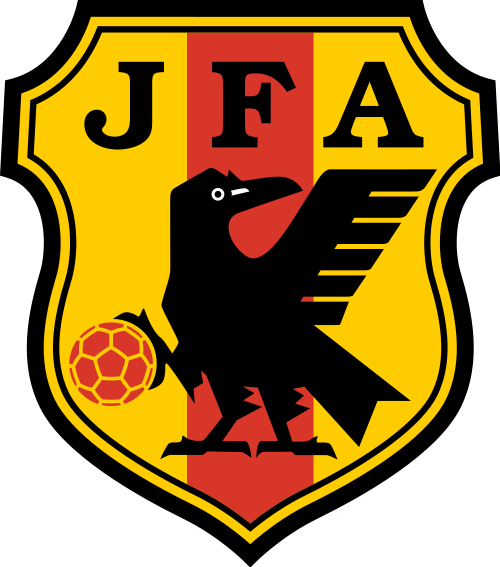
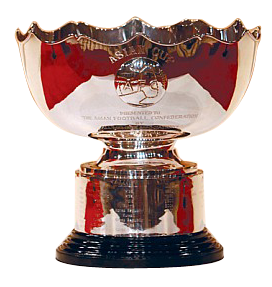




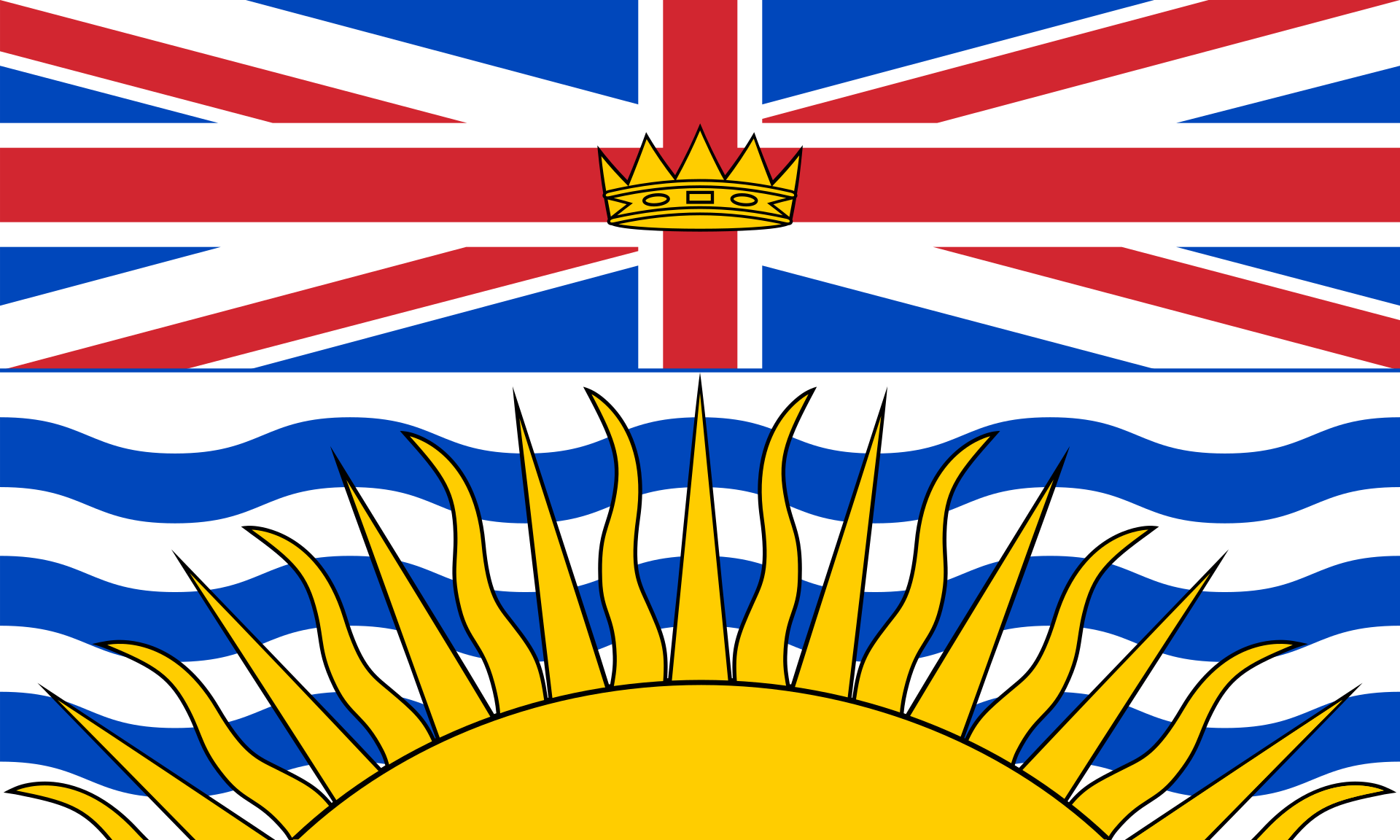 British Columbia-BC
British Columbia-BC

 FIFA Fussball-Weltmeisterschaft 2026
FIFA Fussball-Weltmeisterschaft 2026
 Women's Soccer World Cup 2015
Women's Soccer World Cup 2015

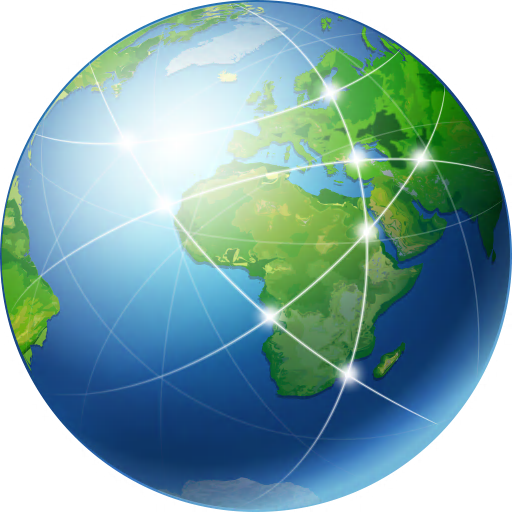 Geography
Geography

 Geography
Geography
 *World's Most Livable Cities
*World's Most Livable Cities
 ITU World Championship Series
ITU World Championship Series
 Canada
Canada
 Winter Olympics
Winter Olympics

 Ski vacation
Ski vacation

 Sport
Sport
 Triathlon
Triathlon

 Important port
Important port

Vancouver (englische Aussprache [væŋˈkuːvɚ] oder [vænˈkuːvɚ]) ist eine Stadt im Südwesten von British Columbia an der Westküste Kanadas. Sie liegt zwischen der Straße von Georgia und den Coast Mountains, rund 45 Kilometer nordwestlich der Grenze zu den USA. Die Stadt gehört zum Regionaldistrikt Metro Vancouver, der mit 2.463.431 Einwohnern[1] die größte Metropolregion Westkanadas und nach Toronto und Montreal die drittgrößte des Landes bildet. Die Bevölkerungszahl der eigentlichen Stadt Vancouver beträgt 631.486.[2] Benannt ist die Stadt nach dem britischen Kapitän George Vancouver, der die Region Ende des 18. Jahrhunderts erforschte und vermaß. Der Name Vancouver selbst stammt vom niederländischen „van Coevorden“, abgeleitet von der Stadt Coevorden.
Die Stadt entstand in den 1860er Jahren als Folge der Einwanderungswelle während des Fraser-Canyon-Goldrauschs und entwickelte sich nach der Eröffnung der transkontinentalen Eisenbahn im Jahr 1887 innerhalb weniger Jahrzehnte von einer kleinen Sägewerkssiedlung zu einer Metropole. Die Wirtschaft basierte zu Beginn auf der Ausbeutung der natürlichen Ressourcen von British Columbia: Forstwirtschaft, Bergbau, Fischerei und Landwirtschaft. Der Hafen Vancouver erlangte nach der Eröffnung des Panamakanals internationale Bedeutung. Er ist heute der größte in Kanada und exportiert mehr Güter als jeder andere Hafen in Nordamerika.
Vancouver wandelte sich mit der Zeit zu einem Dienstleistungszentrum und (insbesondere nach der Weltausstellung Expo 86) zu einem Reiseziel für Touristen. Die Stadt ist darüber hinaus hinter Los Angeles und New York der drittwichtigste Standort der nordamerikanischen Filmindustrie und wird daher auch als „Hollywood North“ bezeichnet. Die Finanzwirtschaft spielt ebenfalls eine bedeutende Rolle. In einer Rangliste der wichtigsten Finanzzentren weltweit belegt Vancouver den 15. Platz (Stand: 2018).[3]
Vancouver veranstaltete vom 12. bis 28. Februar 2010 die XXI. Olympischen Winterspiele. Einige Wettbewerbe der Spiele fanden im 125 Kilometer von Vancouver entfernten Whistler statt. Nach Montreal im Jahr 1976 und Calgary im Jahr 1988 war Vancouver die dritte kanadische Stadt, die Olympische Spiele veranstaltet hat.
一般所说的”温哥华”泛指”大温地区”(请参考温哥华概况介绍)。温哥华市中心位于一个半岛上,主要分成几块区域:西尾区与水滨(West End & Waterfront)、耶鲁镇(Yaletown)、盖士镇与华埠(Gastown & Chinatown)。市中心往南的温哥华市以Carrall街与Ontario街分成温西(West Side)与温东(East Side)。外地人常把温西与西温哥华(West Vancouver)搞混,后者是温哥华北岸的一个城市,从温哥华市中心向北跨越狮门大桥(Lions Gate Bridge)即可抵达。
西尾区(West End)在市中心西端,北与史丹利公园、南与市中心商业区紧邻,是由整片新兴的高级住宅大楼与罗布森街(Robson Street)购物区、各国风味餐厅、海滩、游艇码头等所组成的热闹区域。到温哥华旅游如果不自行开车,在西尾区住宿是明智选择。
耶鲁镇(Yaletown)是位于市中心东缘的新兴小区,这里有许多杂错的红砖仓库改建成精致典雅的新购物娱乐区与艺术家工作室。一栋栋平房红砖墙的建筑 及巷道上的石板路,将素有“Funky Town"之称的耶鲁镇特色表露无遗。耶鲁镇有电影制片公司、美发沙龙、室内设计工作室、小型设计师家具店、古董店、精品服饰店,加上各种特色美食与露天 咖啡座、小酒馆,让耶鲁镇的雅痞色彩十足,成为温哥华时尚一族抢着进驻的地区。
盖士镇(Gastown)是温哥华的发源地,是个以2条横街和3条直街组成的三角地带。卑诗省政府将盖士镇规划程成为独特的观光区与历史维护区。如今这里 保存完好的19世纪初维多利亚式建筑、铺满圆石的悠长街道、别致的露天咖啡屋,复古的路灯及一座座低矮的历史建筑,行走其间宛如时空错置。也是游客来温哥 华必至之处。(Quelle:http://www.usatrip.cn/jdjs/jdjs_Vancouver.asp)
温哥华市(City of Vancouver)是加拿大不列颠哥伦比亚省低陆平原地区一沿岸城市。根据2016年加拿大统计局人口普查,温哥华市人口有631,486人,而大温哥华地区的人口为246万,[1]是不列颠哥伦比亚省以至加拿大西部最大的都会区,以及全国第三大都会区;市内人口则在全国排行第八。[2][3]
温哥华以英国航海家乔治·温哥华命名,欧洲人抵达温哥华一带后,区内经济早期主要依赖于林木业。加拿大太平洋铁路于1887年延至温哥华后,温哥华成为北美西岸水陆路交通的主要枢纽之一,更构成远东地区、加拿大东部和英国之间贸易往来的重要一环。[4][5]温哥华港现时是加拿大最大和最繁忙的港口,以货物总吨数计也是北美第四大港口。[6]此外,温哥华的自然环境深受游客欢迎,令旅游业成为市内第二大经济支柱。[7]温哥华也是北美第三大制片中心,有“北方好莱坞”之称。[8][9]也是20世纪后,与美国旧金山同为华人在北美最集中的地区。
温哥华近年经常在各项世界最佳居住城市的调查中名列前茅。[10][11]温哥华亦曾于2010年与125公里以外的惠斯勒联手举办冬季奥运会和冬季残奥会。[12]此外温哥华还曾举办2015年女子世界杯足球赛,决赛场地即设在不列颠哥伦比亚体育馆。
バンクーバー(英語: Vancouver)は、カナダ連邦ブリティッシュコロンビア州南西部にある都市。同州最大の都市である。ヴァンクーヴァーと表記されることもある[3]。
バンクーバーを中心とする都市圏人口は210万人とカナダ国内第3位の都市圏を形成している[4]。バンクーバー市のみの人口では同国内で第8位の約64万人[5]である。民族や言語が多様で、人口のおよそ52%は第一言語が同州の公用語にあたる英語ではない[6]。北米有数の世界都市であり、2016年に発表された「世界の都市総合力ランキング」では、世界28位と評価された[7]。
1867年に製材所ができ、これらを中心とする入植地であったギャスタウンは発展を続け、グランビルとして町は拡大した。東カナダから続く鉄道の終着駅が町まで敷かれることになった1886年に町はバンクーバーとして改名され市政となる。
林業が同市最大の産業で、都市部ながら自然に囲まれた都市として知られていることから、観光業が発達しており、同市第2の産業となっている[8]。同市にあるメトロバンクーバー港は同国最大の港であり、北米においても積載量で第4位の規模を持つ[9]。同市および隣のバーナビー市には、主要な各映画製作会社が拠点を置いており、ロサンゼルス、ニューヨークに続く北米第3位の規模となる映画製作拠点となっている。このため、通称ハリウッドノースとも呼ばれる[10][11]。国際会議や国際競技が数多く開催されており、2010年には第21回冬季オリンピック(バンクーバーオリンピック)が開催された。
Vancouver (/vænˈkuːvər/ ( listen)) is a coastal seaport city in western Canada, located in the Lower Mainland region of British Columbia. As the most populous city in the province, the 2016 census recorded 631,486 people in the city, up from 603,502 in 2011. The Greater Vancouver area had a population of 2,463,431 in 2016, making it the third-largest metropolitan area in Canada. Vancouver has the highest population density in Canada with over 5,400 people per square kilometre,[5][6] which makes it the fifth-most densely populated city with over 250,000 residents in North America behind New York City, Guadalajara, San Francisco,[7] and Mexico City according to the 2011 census. Vancouver is one of the most ethnically and linguistically diverse cities in Canada according to that census; 52% of its residents have a first language other than English.[8][9] Roughly 30% of the city's inhabitants are of Chinese heritage.[10] Vancouver is classed as a Beta global city.
listen)) is a coastal seaport city in western Canada, located in the Lower Mainland region of British Columbia. As the most populous city in the province, the 2016 census recorded 631,486 people in the city, up from 603,502 in 2011. The Greater Vancouver area had a population of 2,463,431 in 2016, making it the third-largest metropolitan area in Canada. Vancouver has the highest population density in Canada with over 5,400 people per square kilometre,[5][6] which makes it the fifth-most densely populated city with over 250,000 residents in North America behind New York City, Guadalajara, San Francisco,[7] and Mexico City according to the 2011 census. Vancouver is one of the most ethnically and linguistically diverse cities in Canada according to that census; 52% of its residents have a first language other than English.[8][9] Roughly 30% of the city's inhabitants are of Chinese heritage.[10] Vancouver is classed as a Beta global city.
Vancouver is consistently named as one of the top five worldwide cities for livability and quality of life,[11][12] and the Economist Intelligence Unit acknowledged it as the first city ranked among the top-ten of the world's most well-living cities[13] for five consecutive years.[14] Vancouver has hosted many international conferences and events, including the 1954 British Empire and Commonwealth Games, UN Habitat I, Expo 86, the World Police and Fire Games in 1989 and 2009; and the 2010 Winter Olympics and Paralympics which were held in Vancouver and Whistler, a resort community 125 km (78 mi) north of the city.[15] In 2014, following thirty years in California, the TED conference made Vancouver its indefinite home. Several matches of the 2015 FIFA Women's World Cup were played in Vancouver, including the final at BC Place.[16]
The original settlement, named Gastown, grew up on clearcuts on the west edge of the Hastings Mill logging sawmill's property, where a makeshift tavern had been set up on a plank between two stumps and the proprietor, Gassy Jack, persuaded the curious millworkers to build him a tavern, on July 1, 1867. From that first enterprise, other stores and some hotels quickly appeared along the waterfront to the west. Gastown became formally laid out as a registered townsite dubbed Granville, B.I. ("B.I" standing for "Burrard Inlet"). As part of the land and political deal whereby the area of the townsite was made the railhead of the Canadian Pacific Railway (CPR), it was renamed "Vancouver" and incorporated shortly thereafter as a city, in 1886. By 1887, the Canadian Pacific transcontinental railway was extended westward to the city to take advantage of its large natural seaport to the Pacific Ocean, which soon became a vital link in a trade route between the Orient / East Asia, Eastern Canada, and Europe.[17][18] As of 2014, Port Metro Vancouver is the third-largest port by tonnage in the Americas (recently displacing New York City), 27th in the world,[19] the busiest and largest in Canada, and the most diversified port in North America.[20] While forestry remains its largest industry, Vancouver is well known as an urban centre surrounded by nature, making tourism its second-largest industry.[21]
Major film production studios in Vancouver and nearby Burnaby have turned Greater Vancouver and nearby areas into one of the largest film production centres in North America,[22][23] earning it the nickname "Hollywood North".[24][25][26]
Vancouver /vãkuvaɛ̯ʁ/a Écouter ou /vɑ̃kuvɛʁ/b (en anglais : /væŋˈkuvɚ/c Écouter) est une cité1 portuaire du pourtour du Pacifique située dans les basses-terres continentales de la province de Colombie-Britannique, au Canada. Avec 631 486 habitants selon le recensement du Canada de 2016, elle est la huitième plus grande municipalité canadienne3. Son agglomération de 2 463 431 est la troisième aire urbaine du pays, et la plus peuplée de l'Ouest canadien. Vancouver est une des villes les plus cosmopolites du Canada, 52 % des résidents ont une autre langue maternelle que l'anglais4. Vancouver est considérée comme une ville mondiale de classe beta. La superficie de Vancouver est de 114,97 km2, donnant une densité de population de 5 493 au kilomètre carré, faisant d'elle la municipalité canadienne la plus densément peuplée et la quatrième en Amérique du Nord, après New York, San Francisco et Mexico5. Elle est la vingt-troisième ville la plus peuplée d'Amérique du Nord6.
Le premier établissement, nommé Gastown, s'est développé autour d'une scierie appelé Hastings Mills, en 1867. Le site fut renommé Vancouver et incorporé comme cité en 1886. En 1887, le chemin de fer transcontinental a été étendu jusqu'à elle pour profiter de son grand port naturel, qui est rapidement devenu un maillon essentiel d'une route commerciale entre la côte est du Canada, l'Orient et l'Europe7,8. En 2009, Port Metro Vancouver est le port le plus grand et le plus achalandé du Canada, et le plus diversifié d'Amérique du Nord9. Même si l'exploitation forestière demeure sa plus grande industrie, Vancouver est réputée pour être un centre urbain entouré par la nature, faisant du tourisme sa deuxième industrie10. Les studios de production cinématographique de Vancouver et de Burnaby ont fait de la métropole l'un des plus grands centres cinématographiques en Amérique du Nord11,12, ce qui lui a valu le surnom de Hollywood North13,14,15.
Vancouver est régulièrement citée comme l'une des cinq meilleures villes au monde pour sa qualité de vie16,17, et l'Economist Intelligence Unit l'a classée parmi les dix villes les plus agréables durant cinq années consécutives18,19. Vancouver fut l'hôte de nombreux évènements internationaux, comme les Jeux de l'Empire britannique et du Commonwealth de 1954, la conférence Habitat I par l'Organisation des Nations unies en 1976, l'Exposition internationale de 1986 et les Jeux olympiques d'hiver de 201020. En 2015, elle a accueilli la finale de la Coupe du monde féminine de football21. La ville accueillera en 2018 le Congrès ornithologique international.
Vancouver (AFI: [vanˈkuver][1]) è una città canadese, sulla costa Pacifica della provincia canadese della Columbia Britannica (British Columbia). È situata nella parte meridionale della provincia e rappresenta uno dei maggiori porti dell'Oceano Pacifico. È delimitata dallo Stretto di Georgia (Georgia Strait), dal fiume Fraser, e dalla catena montuosa delle Montagne Costiere. Il nome è in onore del capitano George Vancouver, esploratore britannico.
La popolazione della città è di 603 502 abitanti, mentre l'area urbana ne conta 2 135 201. Vancouver fa parte della regione metropolitana, conosciuta come la "Greater Vancouver Regional District" (GVRD) o Metro Vancouver, nella quale vivono 2 463 700 (stima del 2012)[2]. Questo la rende la più grande area metropolitana nel Canada occidentale, e la terza più grande nel paese. Come in buona parte del Canada, anche Vancouver etnicamente è molto diversificata, basti pensare che il 52% dei residenti[3][4] della città e il 43% dell'area metropolitana hanno come prima lingua un idioma diverso dall'inglese[5].
La popolazione metropolitana è proiettata a raggiungere i 3 milioni di abitanti entro il 2021[6]. La densità di popolazione è tra le più alte del Nord America, e la pone al quarto posto dopo New York, San Francisco e Città del Messico. Il trend porta a stimare che possa raggiungere il secondo posto entro il 2021[7].
L'economia di Vancouver ha tradizionalmente fatto leva sulle risorse della Columbia Britannica: forestali, minerarie, pesca e agricoltura. Ma tuttavia è andata diversificandosi nel tempo, ed oggi Vancouver ha un'importante e vitale industria nel settore dei servizi e del turismo. La città è diventata il terzo più grande polo di produzione cinematografico del Nord America dopo Los Angeles e New York, tanto da guadagnarsi il soprannome di Hollywood del Nord[8][9][10]. Vancouver ha avuto un'espansione nell'industria dell'high-tech, in particolare nello sviluppo dei videogiochi.
Vancouver è costantemente classificata fra le prime tre città più vivibili del mondo[11][12][13]. Secondo il rapporto 2010 della Mercer Human Resource Consulting, ad esempio, Vancouver è considerata la prima città al mondo per qualità della vita. Nel 2007 Vancouver era la seconda città più cara del Canada dopo Toronto e la 89ª a livello globale.
Nel 2010 Vancouver, insieme a Whistler, situata 125 km a nord della città, ha ospitato i Giochi olimpici invernali e i Giochi Paralimpici invernali.
Vancouver (en inglés:  /væŋ'ku:vɚ/ (?·i), en español /baŋ'kuβ̞eɾ/) es una ciudad de la costa pacífica de Canadá, ubicada en el suroeste de la provincia de Columbia Británica, entre el estrecho de Georgia y las Montañas Costeras. La ciudad fue llamada así en honor del capitán George Vancouver, un explorador inglés.
/væŋ'ku:vɚ/ (?·i), en español /baŋ'kuβ̞eɾ/) es una ciudad de la costa pacífica de Canadá, ubicada en el suroeste de la provincia de Columbia Británica, entre el estrecho de Georgia y las Montañas Costeras. La ciudad fue llamada así en honor del capitán George Vancouver, un explorador inglés.
Es parte del área metropolitana del Distrito Regional del Gran Vancouver, el cual, con una población de 2 313 328 habitantes (2011),1 constituye el área metropolitana más grande del oeste canadiense y la tercera en el país después de Toronto y Montreal.2 Vancouver en sí mismo cuenta con 603 502 habitantes.1 El gentilicio utilizado para referirse a los residentes de Vancouver es vancuverita o vancouverense,3 (en inglés Vancouverite).
Vancouver, en los últimos años, siempre ha sido considerada como una de las cinco ciudades con mejor calidad de vida en el mundo.4567 En 2013, obtuvo el puesto 21º entre las ciudades en que es más caro vivir y resultó ser la más cara de Norteamérica. 8 También es una de las ciudades más seguras del mundo, debido a sus bajísimas tasas de criminalidad.
Los Juegos Olímpicos y Paralímpicos de invierno de 2010 se llevaron a cabo en Vancouver y en la cercana localidad de Whistler.91011
Ванку́вер (англ. Vancouver) — город на западе Канады, крупнейший населённый пункт провинции Британская Колумбия и третий по величине в Канаде. В 2010 году в Ванкувере проводились XXI зимние Олимпийские игры. Исследовательская группа Economist Intelligence Unit (EIU) британского издания The Economist трижды — в 2005, 2007, 2009 годах — присваивала Ванкуверу звание «лучшего города Земли»[2][3][4].
Население самого города — 631 486 чел. (на 2016 год). В агломерации Большой Ванкувер (англ.)русск. проживает свыше 2 463 431 чел. (на 2016 год) — это третья по величине агломерация в Канаде. Ванкувер является наиболее этнически и лингвистически разнообразным городом страны — 52 % его жителей считают своим родным языком не английский[5].

 FIFA Fussball-Weltmeisterschaft 2026
FIFA Fussball-Weltmeisterschaft 2026
 FIFA Club World Cup 2025
FIFA Club World Cup 2025
 United States
United States

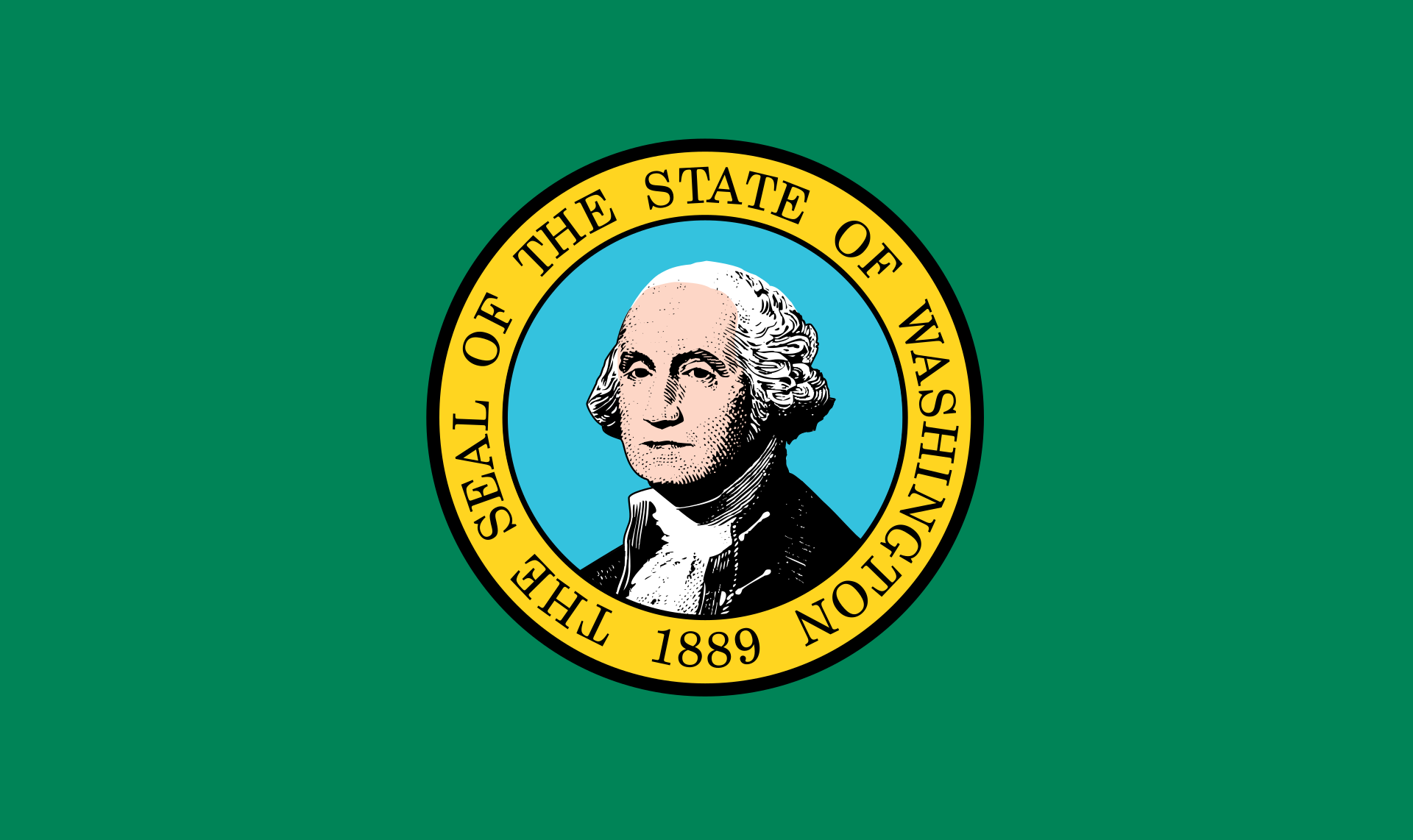 Washington-WA
Washington-WA

 Important port
Important port

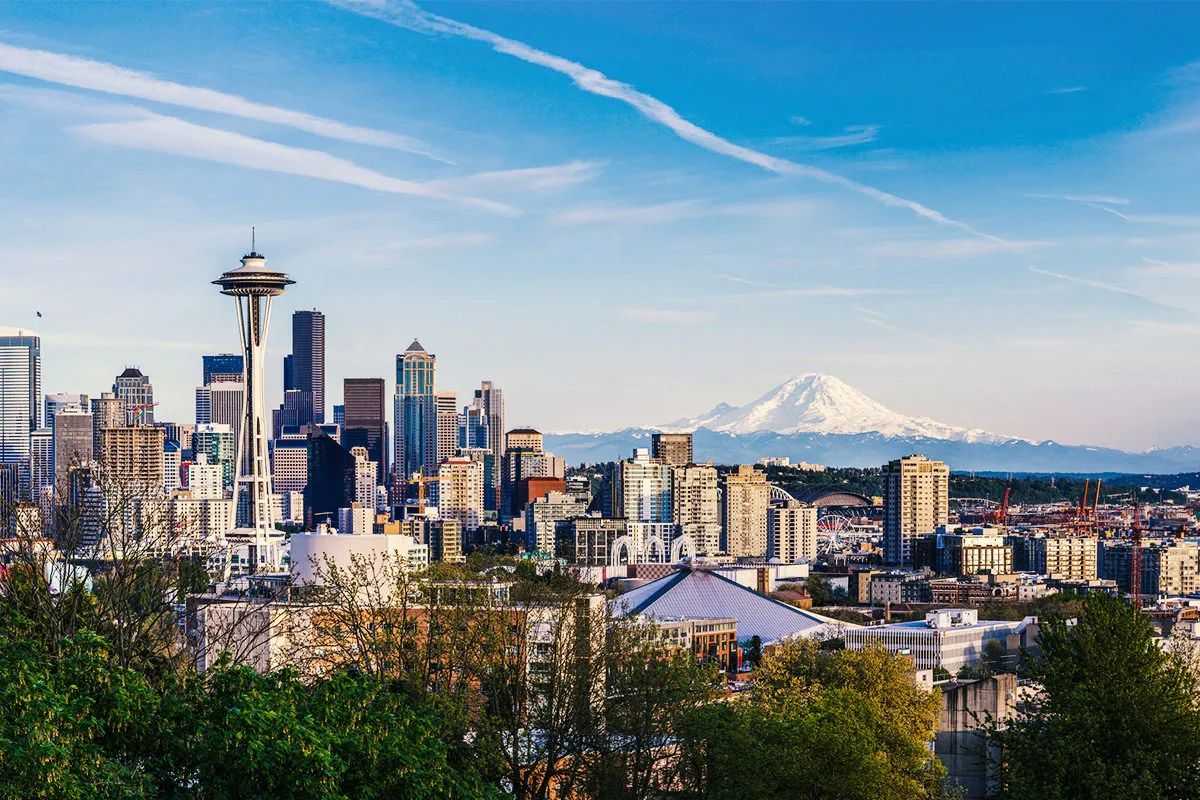

Seattle (englisch: 
![]() [sɪˈætəl]; deutsch: [siˈɛtl̩]) ist die größte Stadt im Nordwesten der Vereinigten Staaten. Sie ist der Verwaltungssitz des King County im US-Bundesstaat Washington und liegt zwischen dem Puget Sound und dem Lake Washington, etwa 155 Kilometer südlich der Grenze zu Kanada. Neben Vancouver und Portland ist Seattle der Verkehrsknotenpunkt und das wirtschaftliche, wissenschaftliche und kulturelle Zentrum in der Region des Pazifischen Nordwestens.
[sɪˈætəl]; deutsch: [siˈɛtl̩]) ist die größte Stadt im Nordwesten der Vereinigten Staaten. Sie ist der Verwaltungssitz des King County im US-Bundesstaat Washington und liegt zwischen dem Puget Sound und dem Lake Washington, etwa 155 Kilometer südlich der Grenze zu Kanada. Neben Vancouver und Portland ist Seattle der Verkehrsknotenpunkt und das wirtschaftliche, wissenschaftliche und kulturelle Zentrum in der Region des Pazifischen Nordwestens.
Die Stadt trägt die Beinamen The Emerald City („Die Smaragdstadt“), was eine Anspielung auf das viele Grün im Stadtgebiet und die großen Wälder ist (sie wird von den Einheimischen allerdings fast nie so bezeichnet), und Rain City – obwohl der Niederschlag geringer ist als in vielen anderen amerikanischen Städten. Der Spitzname kommt von den vielen wolkenreichen und regnerischen Tagen im Jahr. Von den Einheimischen wird sie auch als Jet City bezeichnet, was eine Anspielung auf die nahe gelegenen Boeingwerke ist.
Der Hafen von Seattle ist ein bedeutender Handelsknotenpunkt für den Handel mit Asien, Alaska und Hawaii. Die wichtigsten ansässigen Industrien sind die Luft- und Raumfahrt (Boeing), Eisen- und Stahlindustrie sowie die Holzverarbeitung. Als bauliches Wahrzeichen von Seattle gilt der für die Weltausstellung 1962 errichtete Turm Space Needle. Die Stadt ist Sitz der University of Washington.
Die Stadt wurde benannt nach Noah Sealth, Häuptling der Duwamish und Suquamish, besser bekannt unter dem Namen Häuptling Seattle.
西雅图(英语:Seattle),华文早期译作舍路,是美国华盛顿州的一座港口城市。西雅图是华盛顿州金郡首府,位于普吉特海湾和华盛顿湖之间,距离美加边境约174千米,是该州最大的城市,也是美国太平洋西北区最大的城市。据2020年人口普查数据,全市人口737,015人[5],都会区人口400万左右,为美国第15大都会区[6]。2010至2020年间,西雅图的人口增长率为21.1%,是全美人口增长最快的大城市之一。[7]
距今约4000年前,就已经有美洲原住民在今天的西雅图地区居住[8]。1851年11月13日,阿瑟·阿姆斯特朗·丹尼及其探险队从伊利诺伊州出发,在俄勒冈州的波特兰乘坐帆船出海,抵达现今西雅图地区的阿尔凯角并建立了第一个定居点[9],这个定居点于1853年被迁移到现在的位置并被命名为“西雅图”(得名于西雅图酋长)。
伐木业是西雅图第一个主要产业,但在19世纪后期的克朗代克淘金热中,该市成为位于通往阿拉斯加途中的一个商业和造船业中心。到1910年,西雅图已成为美国25大城市之一[10]。但在大萧条时期,其经济发展受到严重影响,于第二次世界大战期间及以后逐渐恢复,这部分得益于当地的波音公司将其制造中心定于此地。上世纪80年代起,西雅图发展为一个科技中心,不少像微软这样的公司在西雅图地区创立。杰夫·贝索斯也于1994年在西雅图创立了网络零售商亚马逊。软件,生物技术和互联网公司的发展使该市经济得以复兴,人口也在1990至2000间增加了超过5万人。2010年起,西雅图又成为了一个绿色工业和可持续发展模式的中心,并被认为是2010至2020年间美国发展速度最快的主要城市之一[11][12]。
西雅图的官方别名为“翡翠之城(the Emerald City)”,其他别名还有“雨城(the Rainy City)”、“常绿之城(Evergreen City)”、“阿拉斯加门户(the Gateway to Alaska)”、“女王之城(Queen City)”和“喷气机之城(Jet City)”。西雅图是摇滚音乐家吉米·亨德里克斯的出生地,也被认为是另类摇滚风格垃圾音乐的诞生之地[13]。涅槃乐队,珍珠果酱乐队,爱丽丝囚徒,喷火战机乐队都在西雅图出道。西雅图的咖啡消费量极大,是品牌星巴克诞生之地,第一家门市就在此。

 FIFA Fussball-Weltmeisterschaft 2026
FIFA Fussball-Weltmeisterschaft 2026
 FIFA-Konföderationen-Pokal 2017
FIFA-Konföderationen-Pokal 2017
 New Zealand
New Zealand

 Sport
Sport
 (F)FIFA Confederations Cup
(F)FIFA Confederations Cup

 Sport
Sport
 (F)OFC Nations Cup
(F)OFC Nations Cup







 FIFA Fussball-Weltmeisterschaft 2026
FIFA Fussball-Weltmeisterschaft 2026

 International cities
International cities
 ***Global Urban Economic Competitiveness
***Global Urban Economic Competitiveness

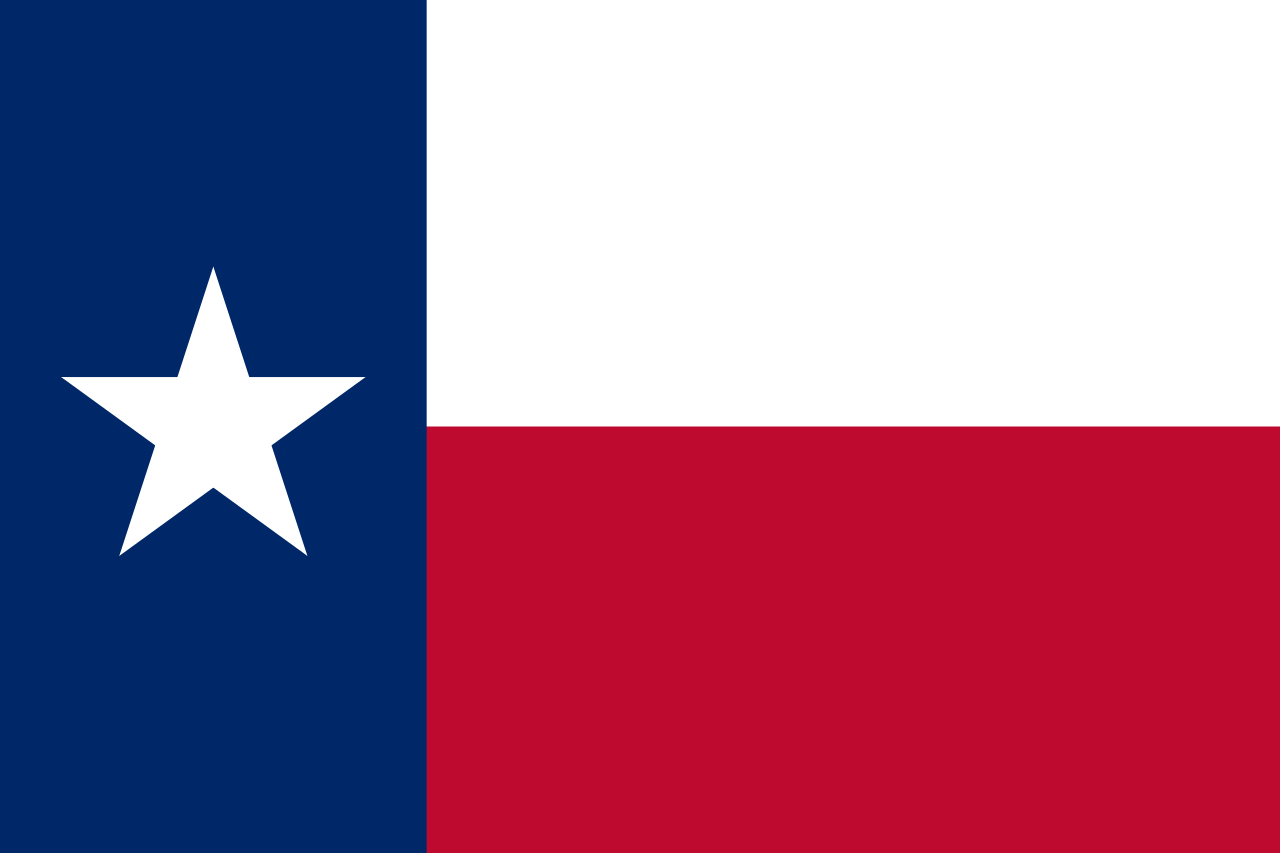 Texas-TX
Texas-TX
 United States
United States
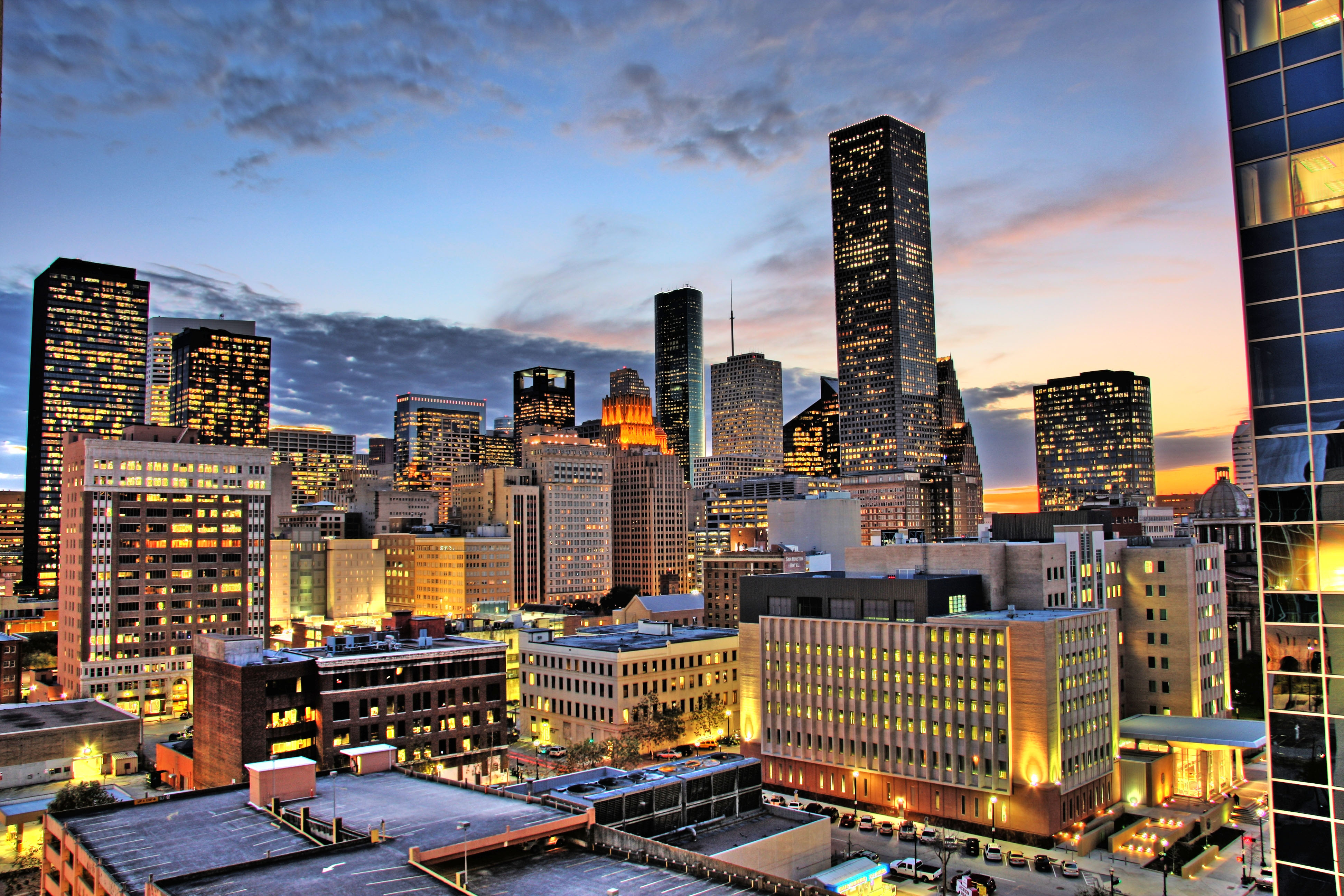
休斯敦(英语:Houston,中国大陆通译休斯敦/休斯顿,港澳通译侯斯顿,台湾通译休士顿)是美国得克萨斯州的第一大城,全美国第四大城,墨西哥湾沿岸最大的经济中心。面积达1,440平方千米,市名是以当年得克萨斯共和国总统山姆·休斯敦(Sam Houston)命名的。
休斯敦是哈里斯县(全国第三大县)的县城。休斯敦在密苏里市的东面,西南部分伸入本德堡县,东北一小部分伸入蒙哥马利县。
休斯敦创建于1836年,合并于1837年,是美国成长最迅速的大城市之一,也是全美最大的一个没有规划法的大城市。
1900年,休斯敦有45,000人口,排名美国第85位。2000年美国人口统计指出,城市人口总数达到190万人(2004年已超过2百万人)。大休斯敦都会区是美国第七大都会区(10个县,5,180,443人)。
休斯敦以其能源(特别是石油)、航空工业和运河闻名世界。休斯敦港是世界第六大港口,美国最繁忙的港口,外轮吨位第一,不分国籍则居第二位。财富500强总部仅次于纽约市。休斯敦是得克萨斯医疗中心的所在地,世界最大和最重要的研究和治疗机构的集中地。休斯敦还是美国27个超过170万人口的重要大都会地区中生活消费和房价最低的。休斯敦被全球化和世界城市研究小组和网络(GaWC)称为“全球城市”。
休斯敦的官方绰号为“太空城(Space City)”,因为它是林顿·约翰逊太空中心的所在地,任务监控中心也设在这里(因此,“休斯敦”是在月球上说的第一个词)。许多当地人喜爱称作“牛沼城”。其他绰号还有“H镇”、“脚爪城”或“蒙古城”。
休斯敦是一个拥有多重文化的城市,许多外来移民的社区在此发展。其美术馆区是许多文化机构和展览的天堂,每年吸引将进七百万的游客,在休斯敦常能看见活跃的视觉表演艺术。
Houston [ˈ(h)juːstən] ist die größte Stadt in Texas und die viertgrößte der USA, hinter New York City, Los Angeles und Chicago.
Im August 1836 kauften John Kirby Allen und Augustus Chapman Allen, zwei Immobilienunternehmer aus New York, 27 km2 Land am Buffalo Bayou mit der Absicht, eine Stadt zu gründen. Die Brüder entschieden sich dazu, die Stadt nach Sam Houston, dem berühmten texanischen General aus der Schlacht von San Jacinto, zu benennen. Am 5. Juni 1837 wurde sie ins Register eingetragen[2] und James S. Holman zum ersten Bürgermeister der Stadt gewählt. Noch im selben Jahr wurde Houston Sitz des Harrisburg County (jetziges Harris County) und die vorübergehende Hauptstadt der Republik Texas.
1901 wurde in Spindletop nahe Beaumont Öl gefunden. Zusammen mit anderen Ölfeldern trieb es die Entwicklung der amerikanischen Ölindustrie an. 1902 gab Präsident Theodore Roosevelt eine Million Dollar für den Bau des Houston Ship Channel frei. Er beginnt am Rand des die Stadt durchziehenden Wasserlaufs Buffalo Bayou. Präsident Woodrow Wilson eröffnete 1914 den etwa 60 km von der Küste entfernten neuen Hafen Houstons. Bis 1930 wuchs Houston dann zur bevölkerungsreichsten Stadt von Texas.
Ende Mai 2015 kam es zu den schwersten Niederschlägen in Texas seit Beginn der Wetteraufzeichnungen und auch Houston war durch seine niedrige Lage stark betroffen; ein nicht unerheblicher Teil der Stadt wurde überschwemmt.[3] Am 26. August 2017 und in den Folgetagen traf der Hurrikan „Harvey“ (eingeordnet in Stufe 4 – der zweithöchsten Stufe) bei Houston auf das Festland mit Regenmengen von mehr als 60–80 Liter pro m² innerhalb von wenigen Stunden. Als Folge davon wurden große Teile des Stadtgebietes überschwemmt, viele Hauptstraßen unpassierbar und Teile der Infrastruktur brachen zusammen. Der Bürgermeister der Stadt sah jedoch von einer Evakuierung ab, da „niemand mit derart heftigen Regenfällen gerechnet hatte“ und „man einen Albtraum geschaffen hätte, würde man 6,5 Millionen Menschen auf die Straße schicken“.[4][5]
ヒューストン(Houston)は、アメリカ合衆国テキサス州南東部に位置する都市。2,099,451人(2010年国勢調査)の人口を抱えるテキサス州最大、全米第4の都市である[1]。ハリス郡を中心に9郡にまたがるヒューストン都市圏の人口は5,920,416人(2010年国勢調査)にのぼる[1]。市域面積は1,500km2におよび、市郡一体の自治体を除くとオクラホマシティに次ぐ全米第2の広さである。
ヒューストンは1836年8月30日にオーガストゥス・チャップマン、ジョン・カービーのアレン兄弟によってバッファロー・バイユーの河岸に創設された。市名は当時のテキサス共和国大統領で、サンジャシントの戦いで指揮を執った将軍、サミュエル・ヒューストンから名を取って付けられた。翌1837年6月5日、ヒューストンは正式に市制施行された。19世紀後半には海港や鉄道交通の中心として、また綿花の集散地として栄えた。やがて1901年に油田が見つかると、市は石油精製・石油化学産業の中心地として成長を遂げた。20世紀中盤に入ると、ヒューストンには世界最大の医療研究機関の集積地テキサス医療センターやアメリカ航空宇宙局(NASA)のジョンソン宇宙センターが設置され、先端医療の研究や航空宇宙産業の発展が進んだ。古くからこうした様々な産業を持ち、フォーチュン500に入る企業の本社数がニューヨークに次いで多いヒューストンは、テキサス州のみならず、成長著しいサンベルトの中心都市の1つであり、アメリカ合衆国南部のメキシコ湾岸地域における経済・産業の中枢である。また、全米最大級の貿易港であるヒューストン港[2]を前面に抱え、ユナイテッド航空(旧・コンチネンタル航空)のハブ空港であるジョージ・ブッシュ・インターコンチネンタル空港を空の玄関口とする、交通の要衝でもある。また、日本を含む世界86ヶ国が領事館を置く世界都市でもある[3][4]。
このようにヒューストンは工業都市・ビジネス都市としてのイメージが強い都市であるが、文化水準の高い都市でもある。ダウンタウンの南側には10以上の博物館・美術館が建ち並び、年間700万人の訪問者を呼び寄せるミュージアム・ディストリクトがある。ミュージアム・ディストリクトに隣接するエリアには、全米の総合大学の中で常にトップ25位以内の高評価を受けている名門私立大学、ライス大学のキャンパスが広がっている。一方、ダウンタウンの中心部に位置するシアター・ディストリクトはヒューストンにおける演技芸術の中心地で、演劇のみならず、オペラ、オーケストラ、バレエなど多彩な演技芸術の公演が行われている[5]。
ジョンソン宇宙センターの存在から、ヒューストンには1967年にSpace City(宇宙の街)という公式な別名がつけられた[6]。地元住民はこのほか、Bayou City(バイユーの街)、Magnolia City(マグノリアの街)、H-Townなどと呼ぶこともある。
Houston (/ˈhjuːstən/ ( listen) HEW-stən) is the most populous city in the U.S. state of Texas and the fourth most populous city in the United States, with a census-estimated population of 2.312 million in 2017.[7] It is the most populous city in the Southern United States[8] and on the Gulf Coast of the United States. Located in Southeast Texas near Galveston Bay and the Gulf of Mexico, it is the seat of Harris County and the principal city of the Greater Houston metropolitan area, which is the fifth most populous MSA in the United States and the second most populous in Texas after the Dallas–Fort Worth metroplex. With a land area of 599.59 square miles (1,552.9 km2),[7] Houston is the ninth most expansive city in the United States.
listen) HEW-stən) is the most populous city in the U.S. state of Texas and the fourth most populous city in the United States, with a census-estimated population of 2.312 million in 2017.[7] It is the most populous city in the Southern United States[8] and on the Gulf Coast of the United States. Located in Southeast Texas near Galveston Bay and the Gulf of Mexico, it is the seat of Harris County and the principal city of the Greater Houston metropolitan area, which is the fifth most populous MSA in the United States and the second most populous in Texas after the Dallas–Fort Worth metroplex. With a land area of 599.59 square miles (1,552.9 km2),[7] Houston is the ninth most expansive city in the United States.
Houston was founded by land speculators on August 30, 1836,[9] at the confluence of Buffalo Bayou and White Oak Bayou (a point now known as Allen's Landing)[10] and incorporated as a city on June 5, 1837.[11] The city is named after former General Sam Houston, who was president of the Republic of Texas and had won Texas' independence from Mexico at the Battle of San Jacinto 25 miles (40 km) east of Allen's Landing.[11] After briefly serving as the capital of the Republic in the late 1830s, Houston grew steadily into a regional trading center for the remainder of the 19th century.[9]
The arrival of the 20th century saw a convergence of economic factors which fueled rapid growth in Houston, including a burgeoning port and railroad industry, the decline of Galveston as Texas' primary port following a devastating 1900 hurricane, the subsequent construction of the Houston Ship Channel, and the Texas oil boom.[9] In the mid-20th century, Houston's economy diversified as it became home to the Texas Medical Center—the world's largest concentration of healthcare and research institutions—and NASA's Johnson Space Center, where the Mission Control Center is located.
Houston's economy has a broad industrial base in energy, manufacturing, aeronautics, and transportation. Leading in health care sectors and building oilfield equipment, Houston has the second most Fortune 500 headquarters of any U.S. municipality within its city limits (after New York City).[12][13] The Port of Houston ranks first in the United States in international waterborne tonnage handled and second in total cargo tonnage handled.[14] Nicknamed the "Space City", Houston is a global city, with strengths in culture, medicine, and research. The city has a population from various ethnic and religious backgrounds and a large and growing international community. Houston is the most diverse metropolitan area in Texas and has been described as the most racially and ethnically diverse major metropolis in the U.S.[15] It is home to many cultural institutions and exhibits, which attract more than 7 million visitors a year to the Museum District. Houston has an active visual and performing arts scene in the Theater District and offers year-round resident companies in all major performing arts.[16]
Houston (en anglais ['hjuːstən]) est une ville de l'État du Texas dans le sud des États-Unis. Avec une population de 2 303 482 habitants dans la municipalité et 6 313 158 dans l'agglomération (estimations du Bureau du recensement des États-Unis, 20161), c'est la plus grande ville du Sud des États-Unis et, après Dallas, la deuxième aire urbaine de la région. Ses habitants s'appellent les Houstoniens. La ville s'étale sur trois comtés dont le principal est le comté de Harris. C'est la quatrième ville des États-Unis après New York, Los Angeles et Chicago.
Houston a une grande industrie pétrochimique ainsi qu'un port maritime ouvert sur le golfe du Mexique. La NASA y a installé l'un de ses centres destiné aux astronautes. L'agglomération est dotée de la plus forte concentration de laboratoires de recherche sur la santé (Texas Medical Center).
Houston est une ville dont la croissance démographique est la seconde des États-Unis après Las Vegas. En 1900, sa population était d'environ 45 000 habitants. Selon les dernières estimations en 2016, l'agglomération comprend plus de 6,3 millions de personnes sur neuf comtés, ce qui en fait la 5e du pays.
Houston (/ˈhjuːstən/ Ascolta[?·info]) è una città (city) degli Stati Uniti d'America e capoluogo della contea di Harris nello Stato del Texas. Una piccola parte della città si estende nelle contee di Fort Bend e Montgomery. La popolazione era di 2.099.451 abitanti al censimento del 2010, il che la rende la città più popolosa dello stato e la quarta città più popolosa della nazione. È la principale città dell'area metropolitana nota come Greater Houston.
Houston venne fondata il 28 agosto 1836, vicino alle sponde del Buffalo Bayou (ora noto come Allen's Landing)[1][2] e incorporata come città il 5 giugno 1837. La città prende il nome dall'ex generale e politico statunitense Sam Houston.
Houston è famosa nel mondo per la sua industria energetica (in particolare petrolifera), e aeronautica, nonché per il suo porto, uno dei più affollati degli Stati Uniti. Molti residenti si sono trasferiti qui da altri stati americani, o da altri paesi del mondo, per motivi di affari.
Houston è sede di numerose università. La più importante è l'Università di Houston, la prima università del Texas per la ricerca; importante è anche l'Università Rice, una università privata che vanta uno dei più alti finanziamenti al mondo. Ci sono inoltre l'Università di Saint Thomas, la Houston Baptist University, l'Università di Houston-Clear Lake, l'Università di Houston-Downtown, e la Texas Southern University.
Houston è soprannominata Space City: infatti qui ha sede la NASA e proprio "Houston" fu la prima parola pronunciata dall'astronauta Neil Armstrong appena il LEM si fu posato sulla superficie lunare. Un altro soprannome è Bayou City, per la fitta rete di piccoli corsi d'acqua (i bayou) che l'attraversano.
Da Houston verso levante si estende la regione Cajun che include il vicino Stato della Louisiana.
Nel 2005 la rivista Men's Fitness ha definito la città come simbolo dell'obesità negli Stati Uniti, poiché dalle statistiche risulta che il 23% dei residenti è clinicamente obeso. Houston ha anche il doppio dei negozi di frittelle dolci rispetto alla media degli Stati Uniti.
La città texana vanta una tra le più folte comunità vietnamite negli Stati Uniti.
Houston (pronunciado en inglés /ˈhjuːstən/, español /'xjus.ton/) es la ciudad más poblada en el estado de Texas y la cuarta ciudad más poblada de Estados Unidos. Houston está ubicada en el sureste de Texas, cerca del golfo de México. Con una población estimada en 2,24 millones de personas en 2014 en un área de 1553 kilómetros cuadrados (599,6 mi²),23 Houston también es la ciudad más grande en el sur de Estados Unidos,4 además de ser la sede del Condado de Harris. Es la principal ciudad en el área de Houston–Sugar Land–Baytown y es la quinta área metropolitan más poblada del país.
Fue fundada el 30 de agosto de 1836 por los hermanos Augustus Chapman Allen y John Kirby Allen en una tierra cercana a las orillas del Buffalo Bayou.5 La ciudad se incorporó el 5 de junio de 1837 y recibió su nombre del entonces presidente de la República de Texas, el antiguo general Sam Houston, quien comandó la batalla de San Jacinto. Dicha contienda tuvo lugar a 40 km al este de donde la ciudad fue establecida. El creciente puerto y la industria del ferrocarril, combinada con el descubrimiento de petróleo en 1901, ha provocado continuos incrementos repentinos de población en la ciudad. A mediados del siglo XX, Houston se convirtió en la base del Texas Medical Center, la mayor concentración de instituciones de investigación y de salud del mundo, y del Centro Espacial Lyndon B. Johnson de la NASA, donde se sitúa el centro de control de misión.
Considerada como una ciudad global beta,6 la economía de Houston posee una amplia base industrial en la energía, manufacturación, aeronáutica, transporte, salud y un importante centro para la creación de equipos petrolíferos; solo Nueva York posee más sedes de empresas Fortune 500 en los límites de su ciudad.7 El puerto de Houston se sitúa el primero de los Estados Unidos en tonelaje manejado en aguas internacionales y el segundo en tonelaje total de carga manejada.8 La ciudad tiene una población multicultural con una gran y creciente comunidad internacional. Es hogar de muchas instituciones culturales y atrae a más de siete millones de visitantes anuales al Houston Museum District. La ciudad cuenta con una escena activa en cuanto a las artes visuales y escénicas en el Teatro del Distrito y es una de las pocas ciudades estadounidenses que ofertan compañías residentes en todas las artes escénicas principales.9
Хью́стон (англ. Houston, МФА: [ˈhjuːstən]) — четвёртый по количеству жителей город в Соединённых Штатах Америки и крупнейший город в штате Техас с населением 2 319 603 человека на 2017 год[1]. Хьюстон является административным центром округа Харрис, а также главным экономическим центром агломерации Большого Хьюстона с общим населением 6 772 470 человек на 2016 год[2]. Город располагается в 50 километрах от Мексиканского залива на прибрежной равнине.
Хьюстон был основан 30 августа 1836 года и включён в состав республики Техас 5 июня 1837 года, получив своё имя в честь Сэмюэла Хьюстона — главнокомандующего армией Техаса во время Техасской революции и президента Республики Техас. Быстрое развитие порта и железных дорог в XIX веке, а также начало добычи нефти и последовавшее развитие нефтяной промышленности в XX веке привели к быстрому росту населения. В 1960-е годы количество жителей превысило один миллион человек, а в 2000-е — два миллиона.
Город является ведущим мировым центром энергетической промышленности, а экономика города также представлена предприятиями в области аэронавтики, транспорта и здравоохранения. Важнейшими объектами для экономики и инфраструктуры города являются космический центр имени Линдона Джонсона, крупнейший американский по международным грузоперевозкам порт, хьюстонский судоходный канал, крупнейший в мире Техасский медицинский центр.
 Architecture
Architecture
